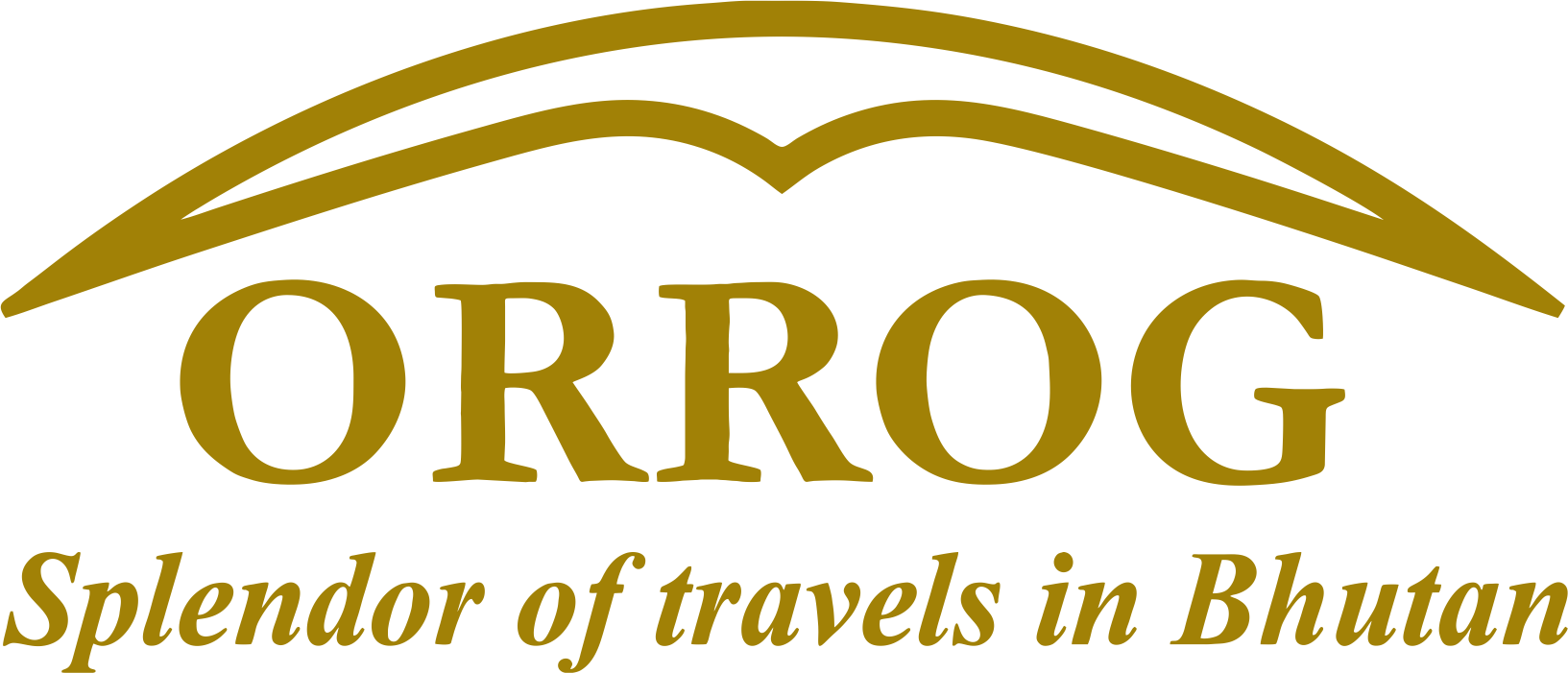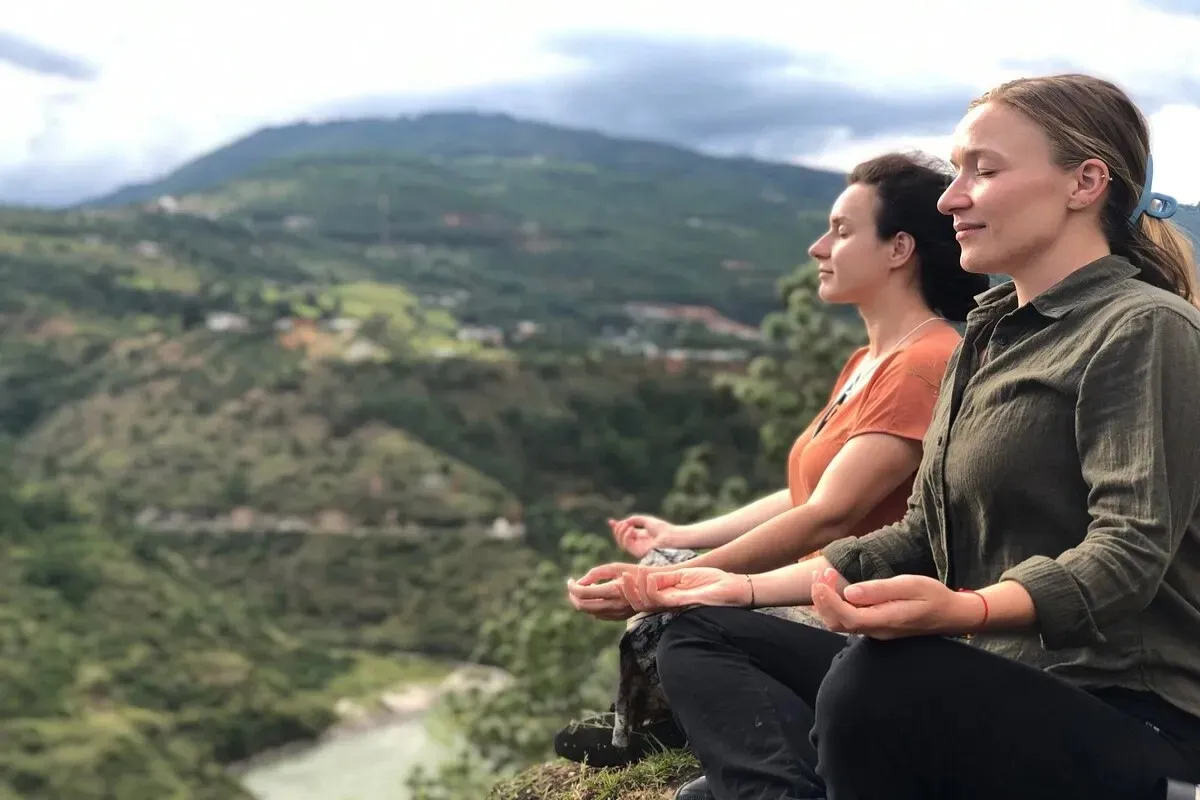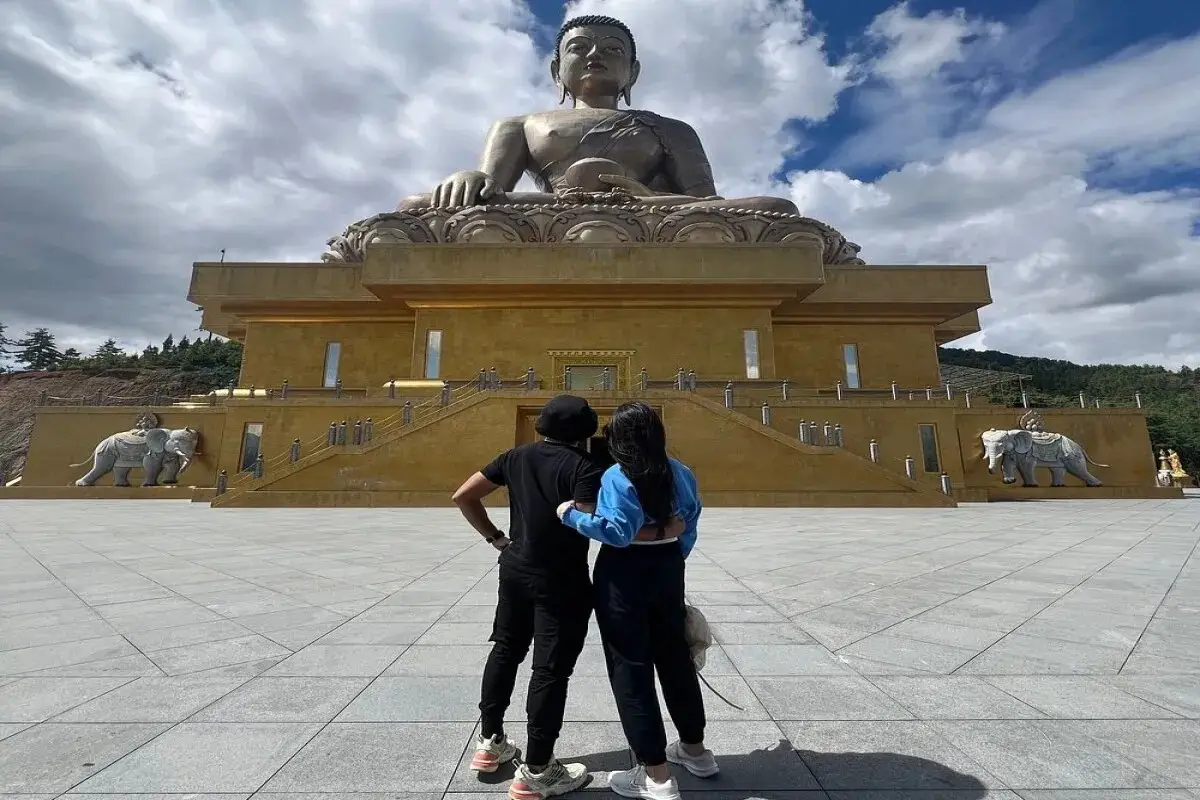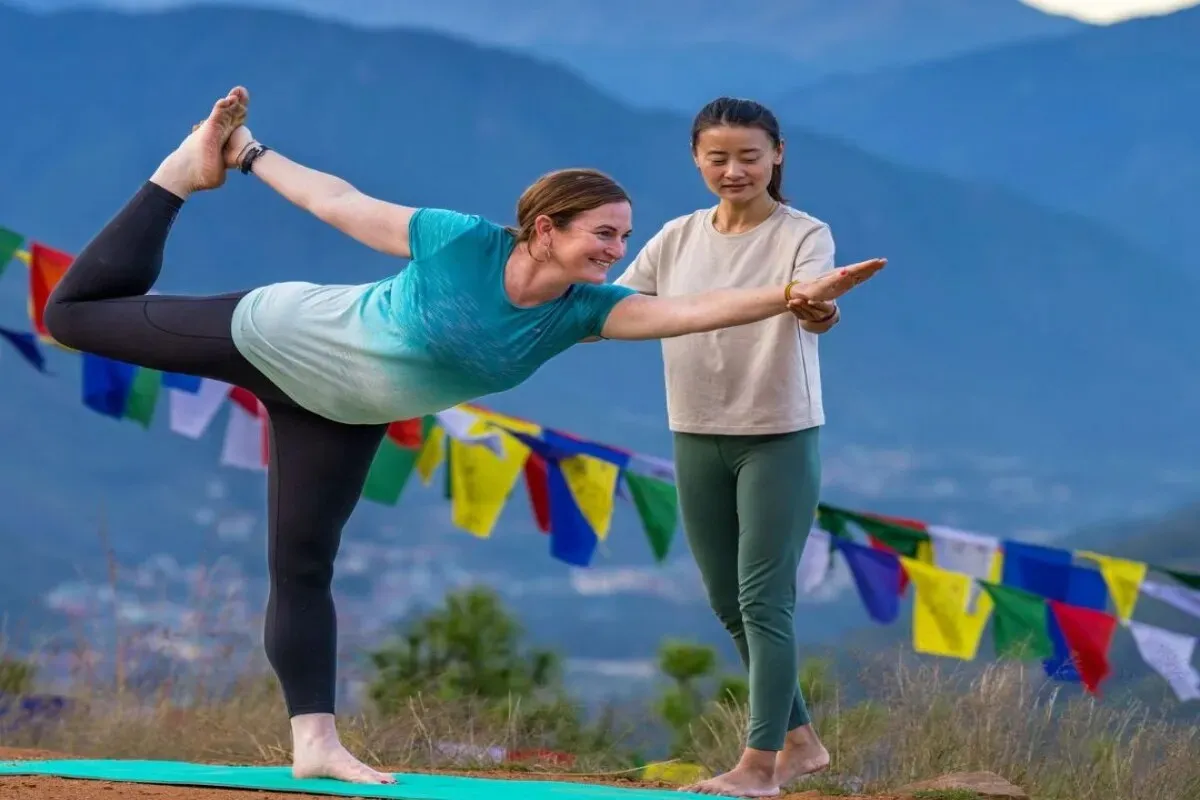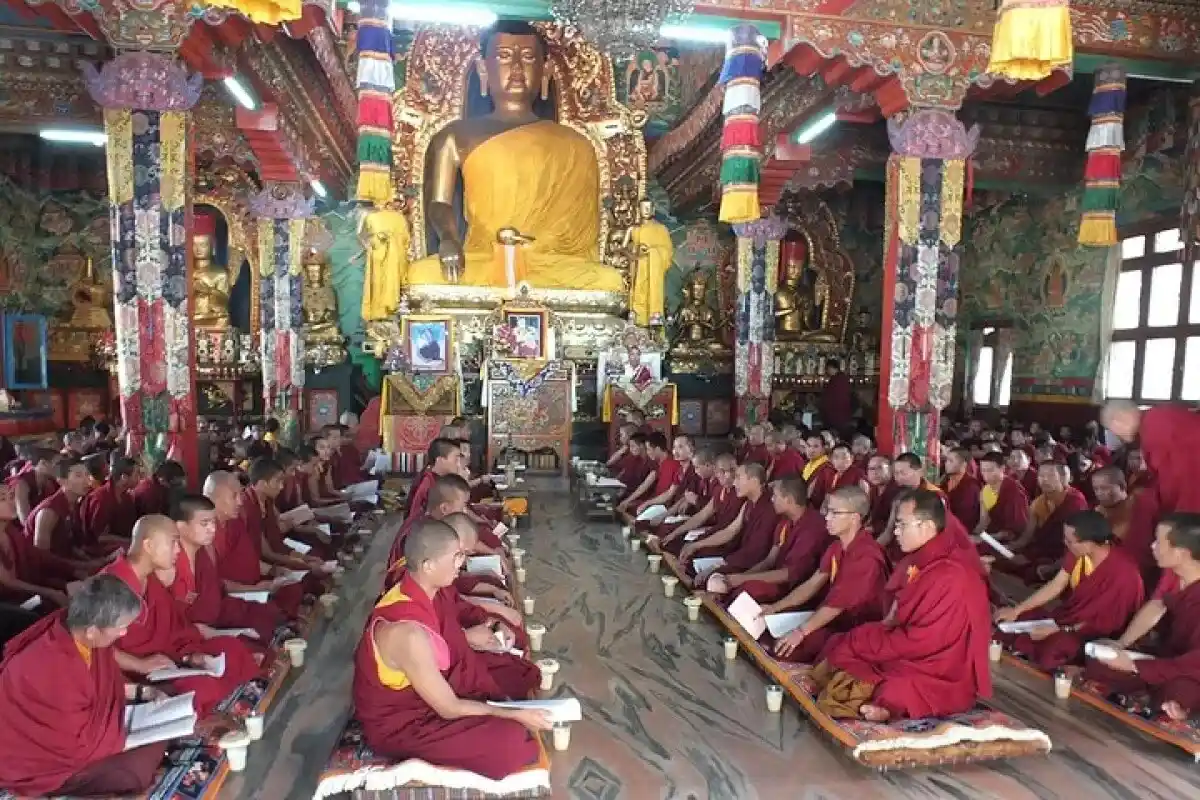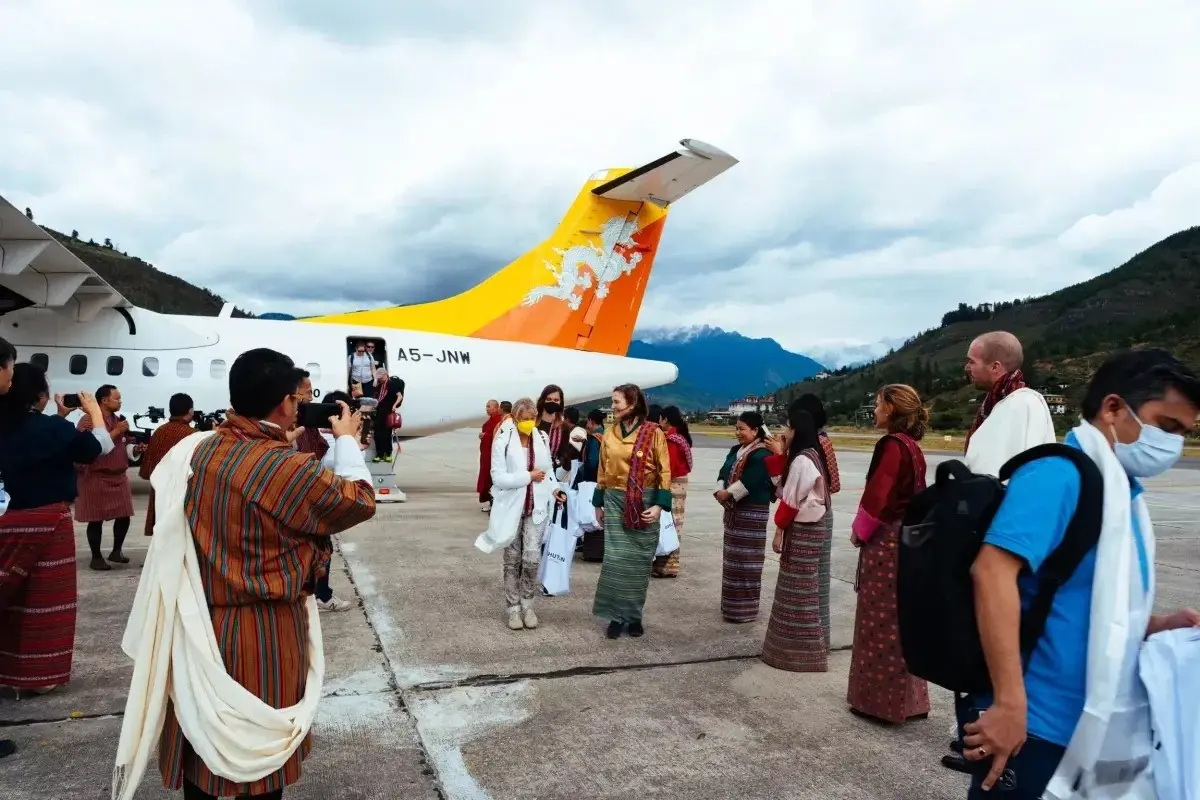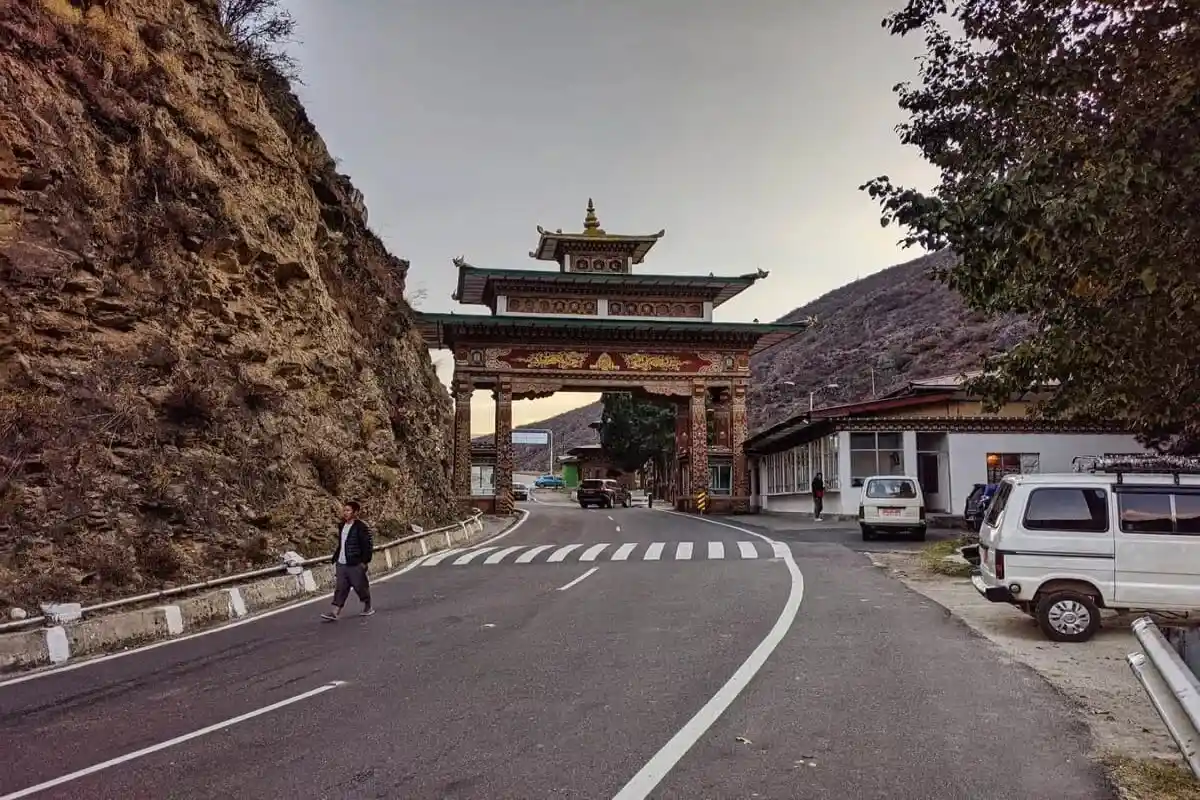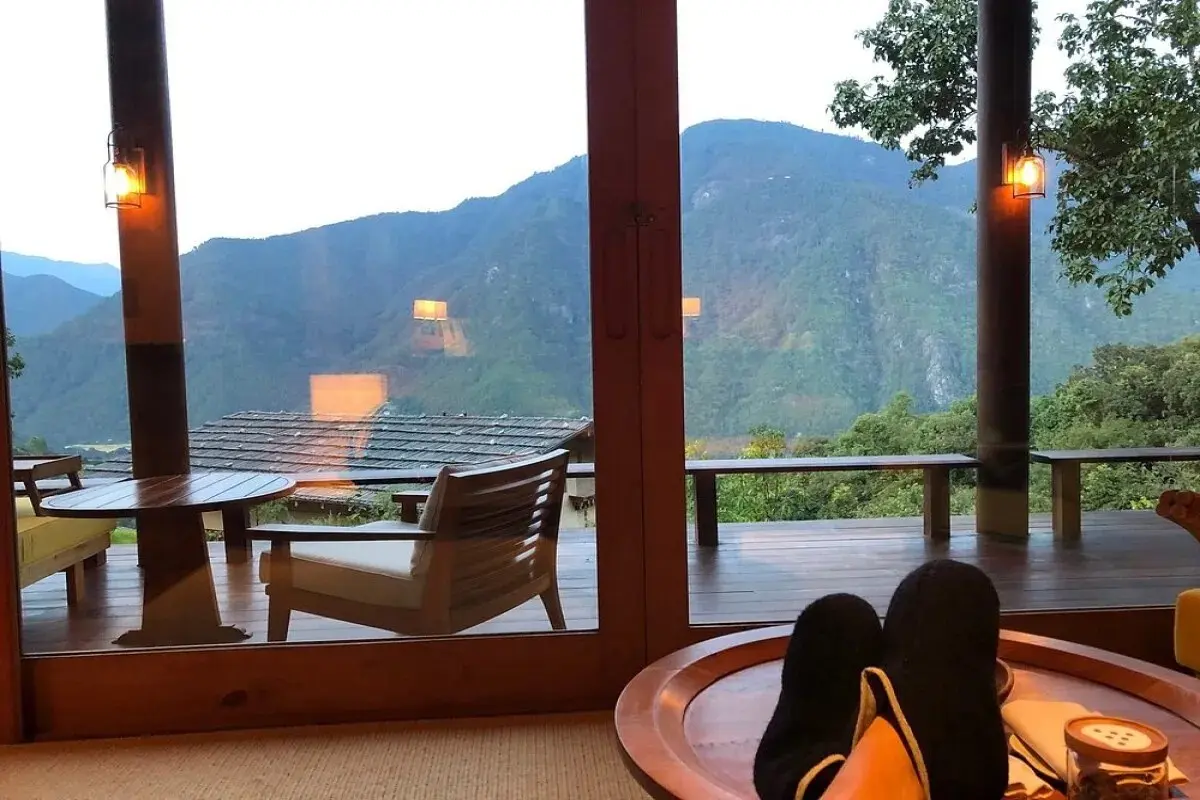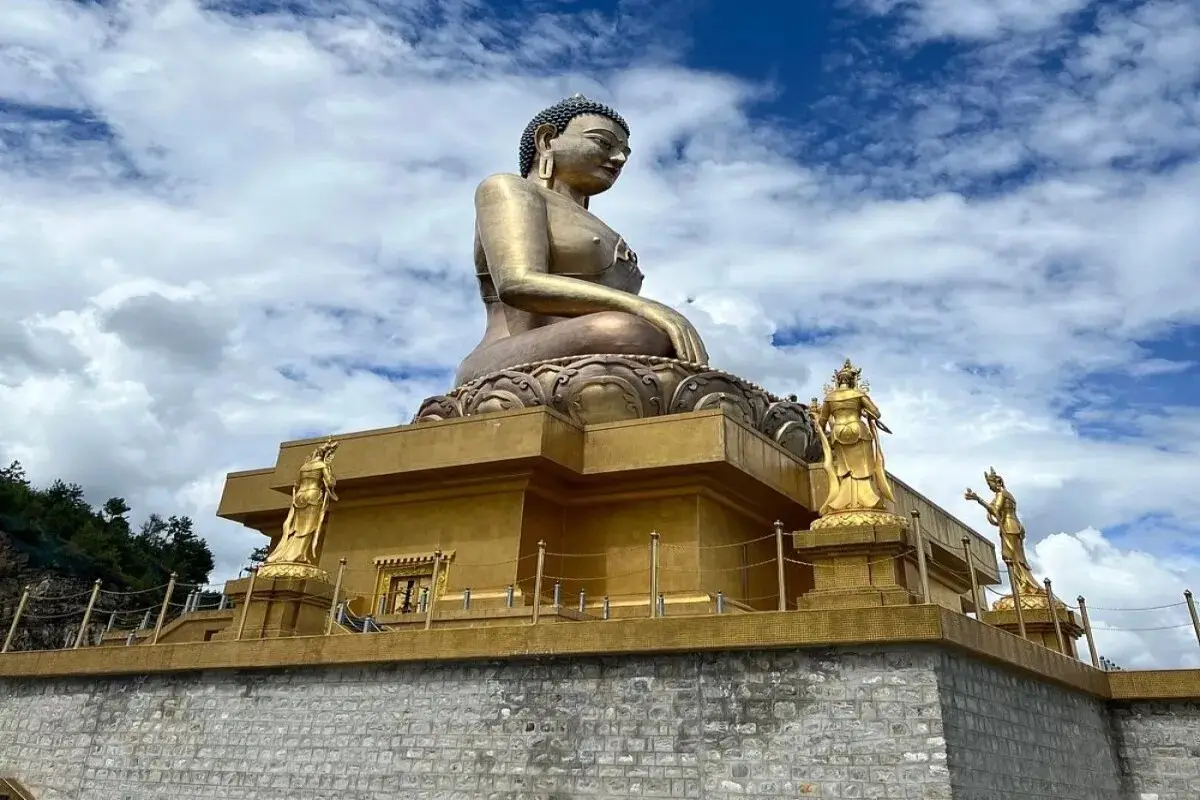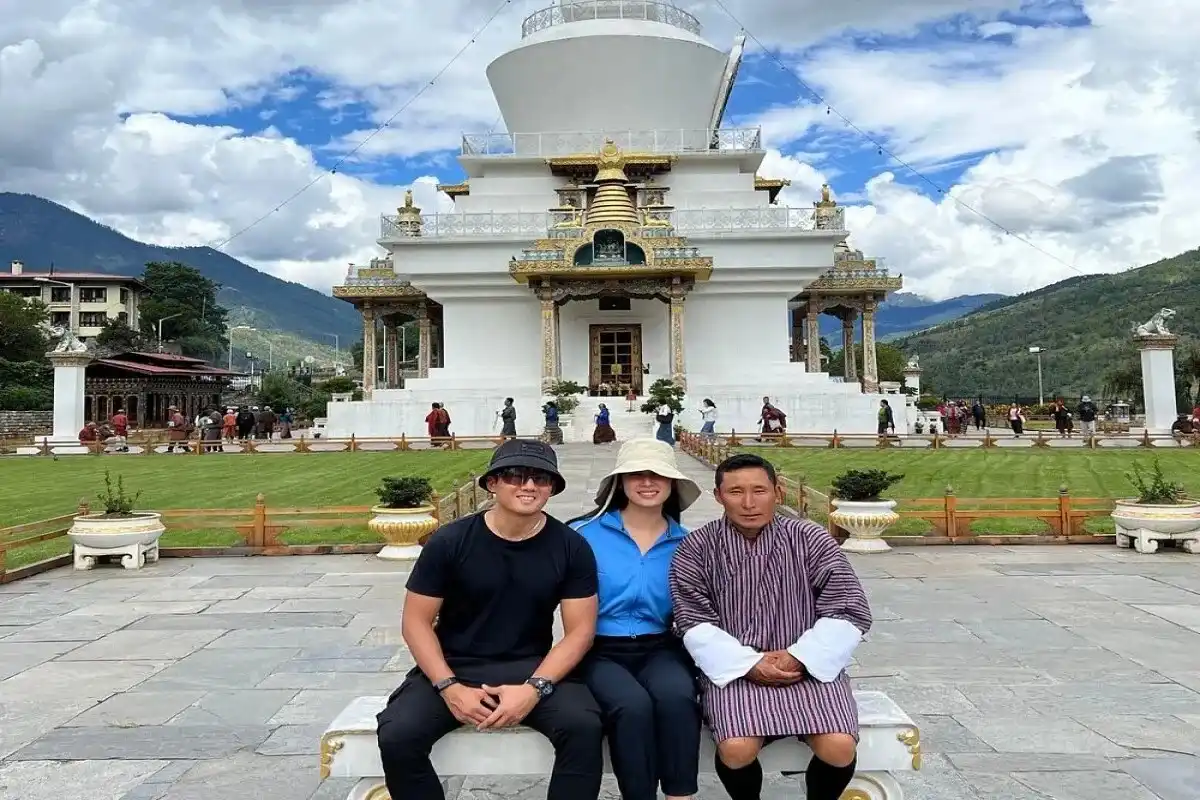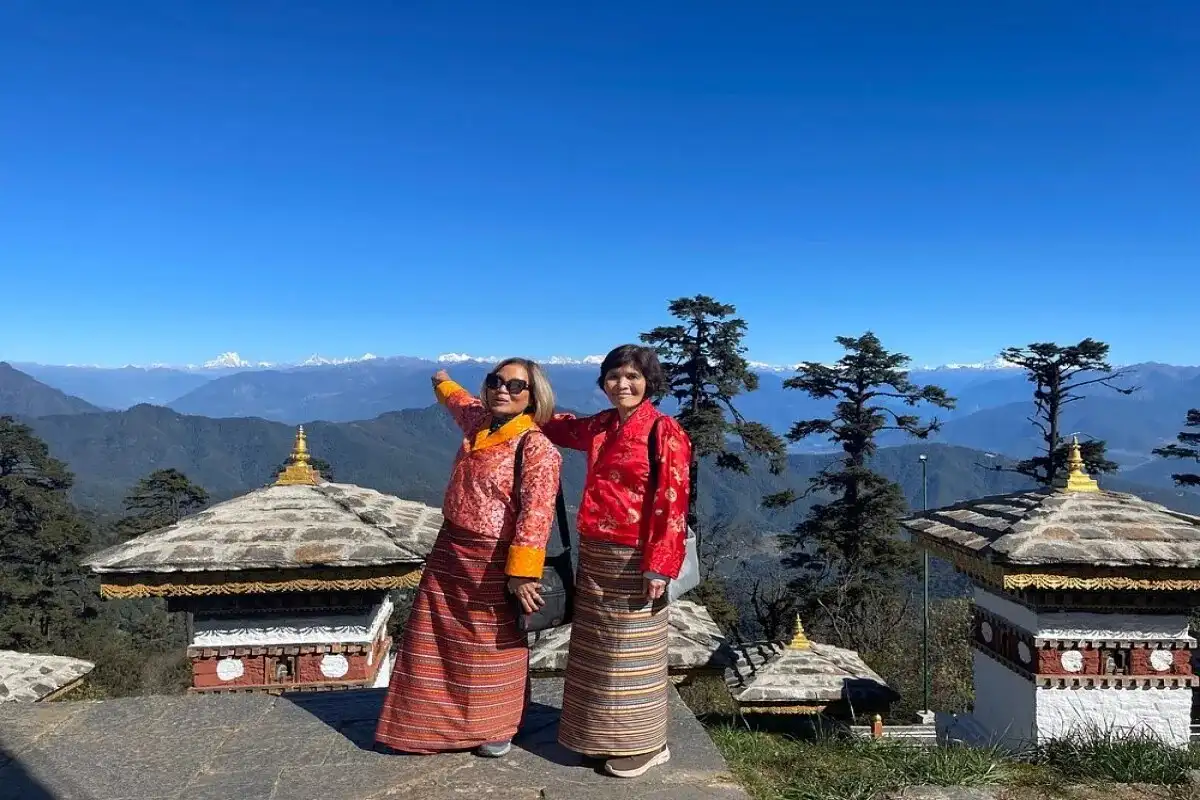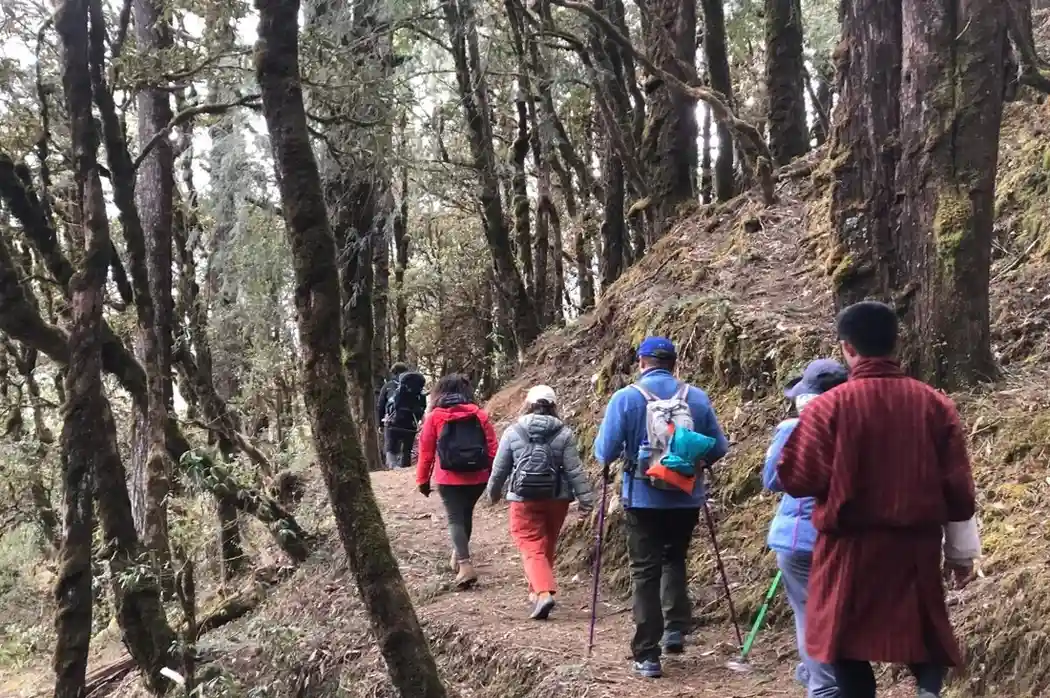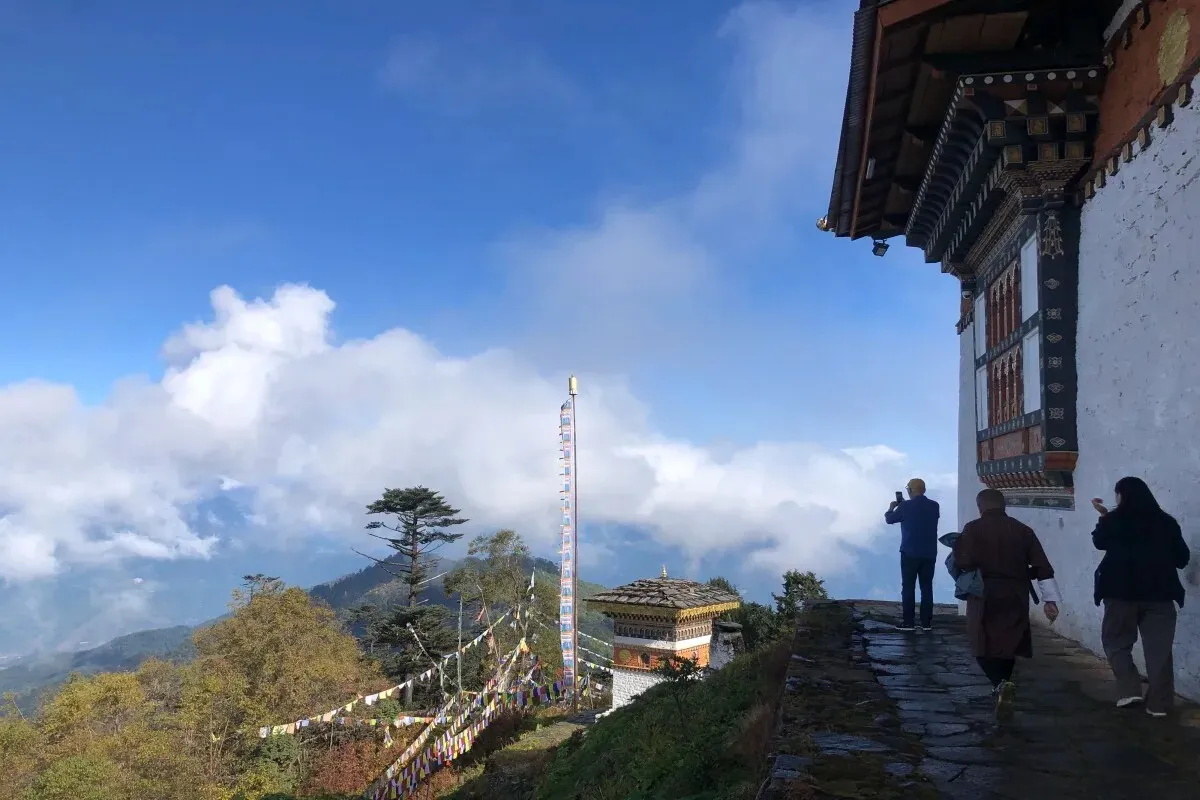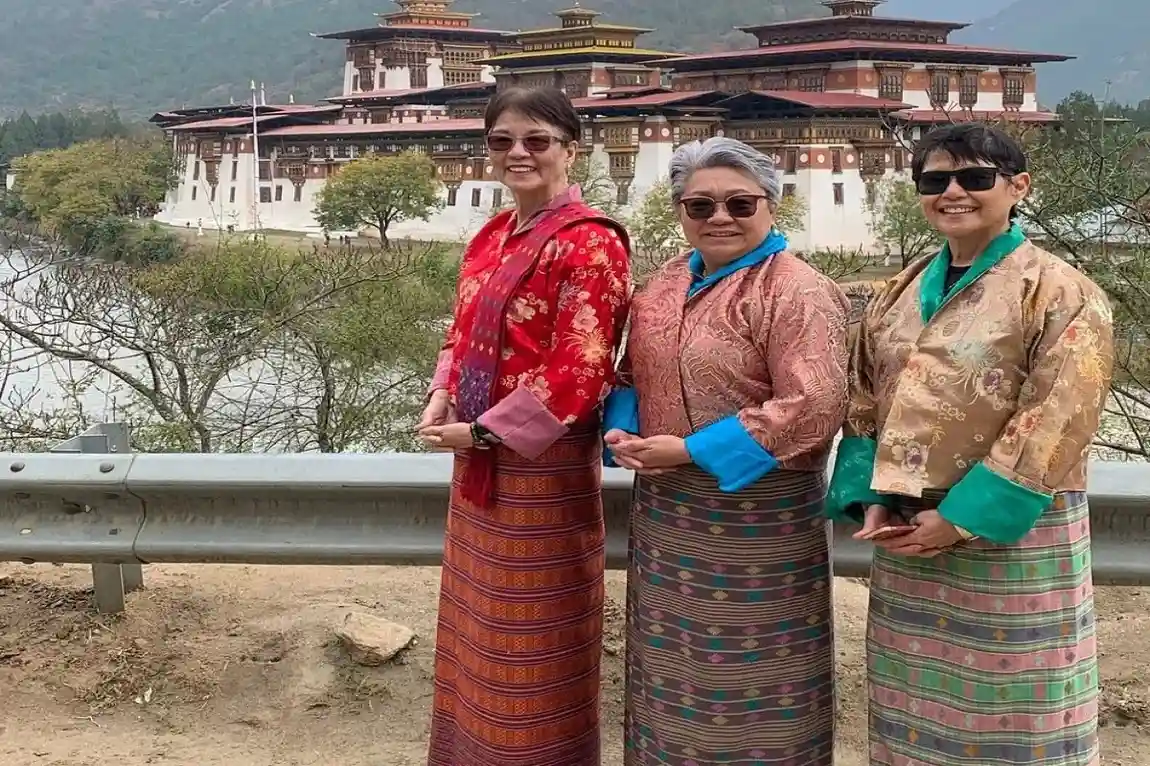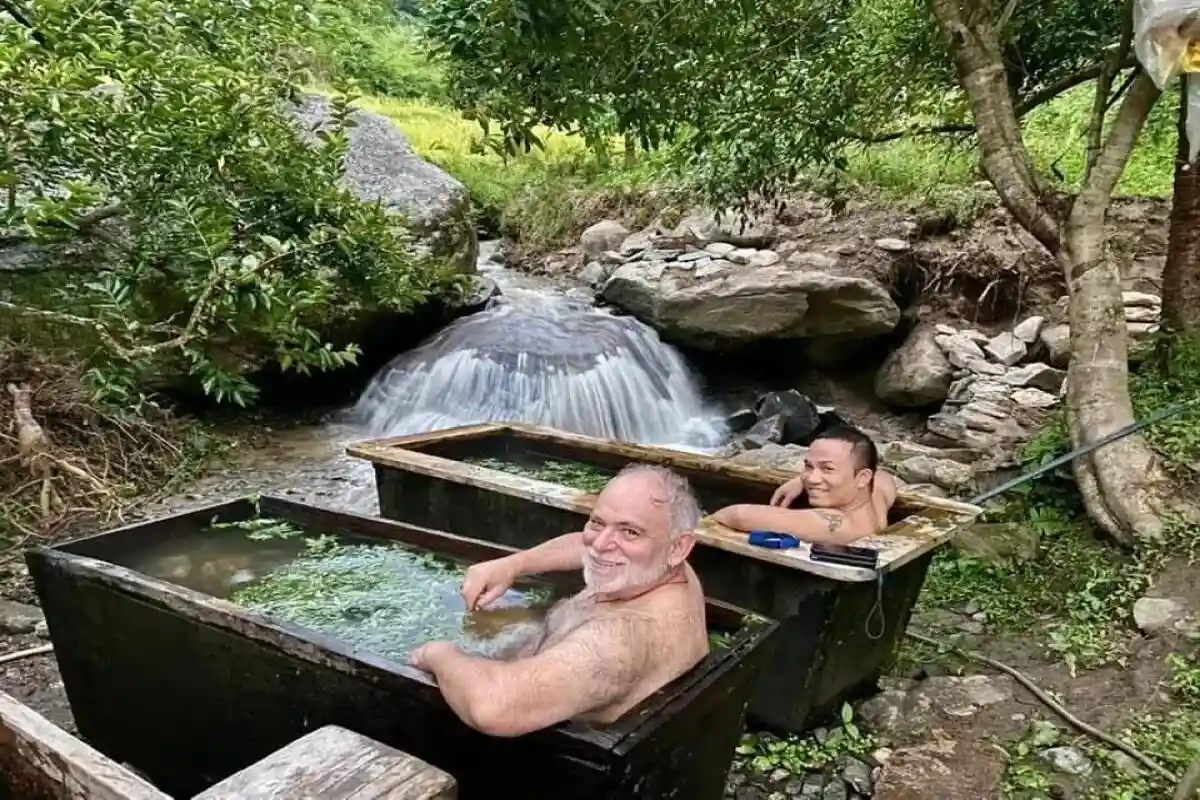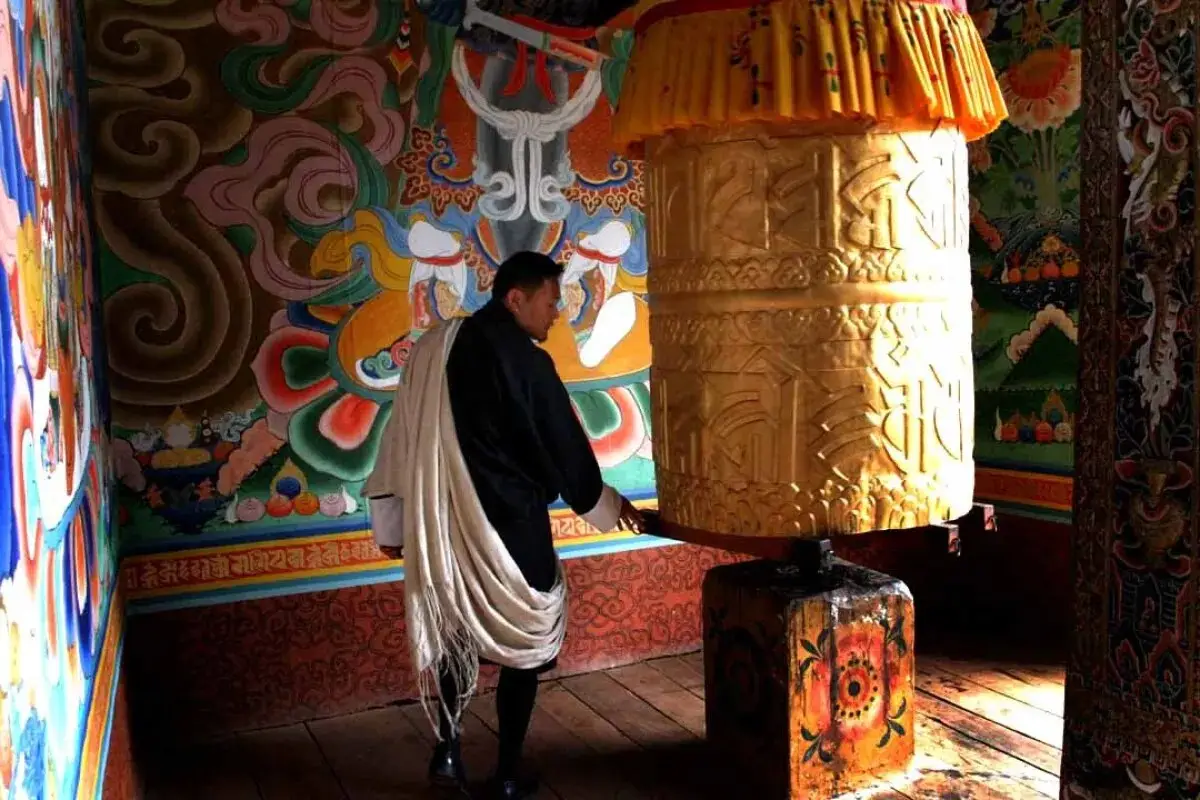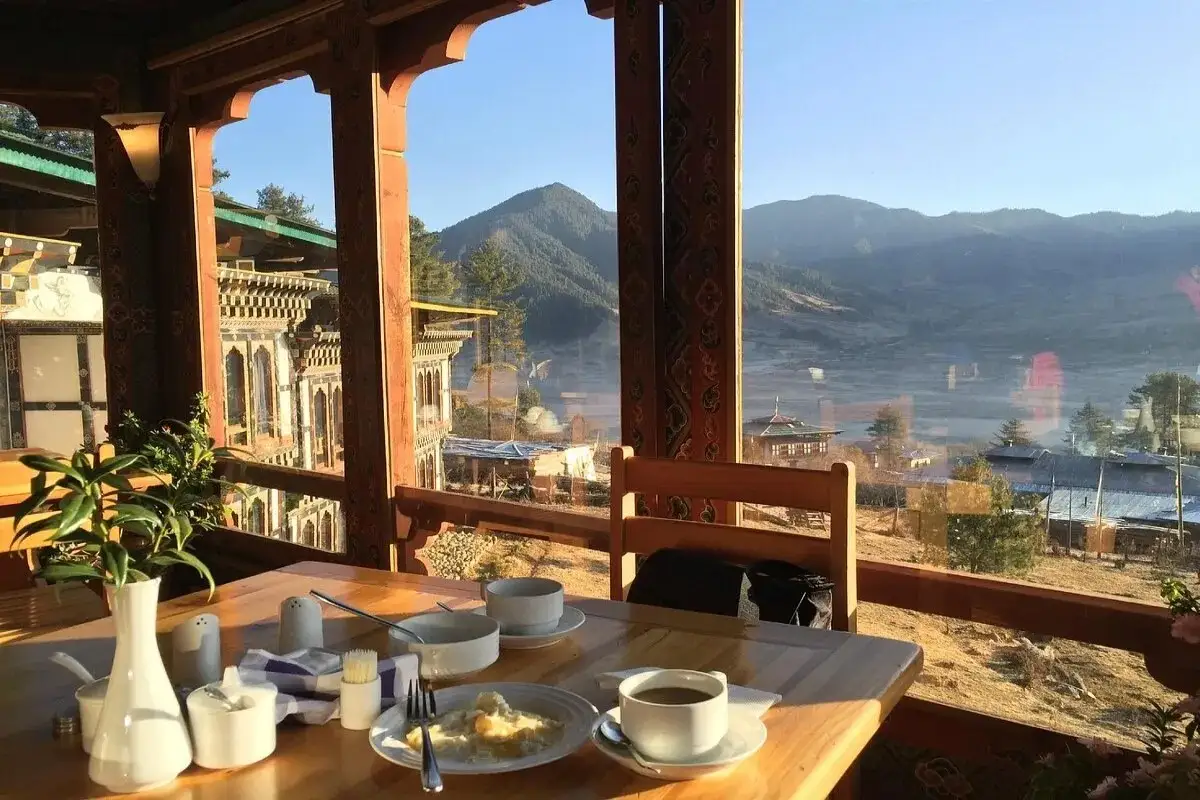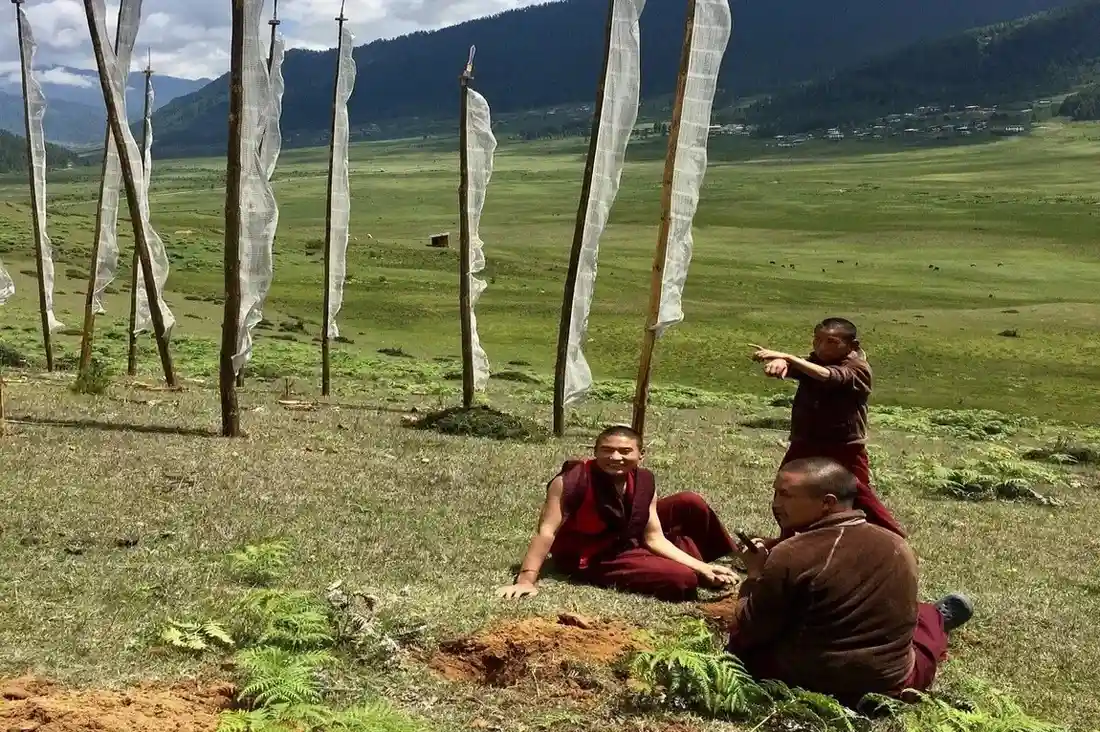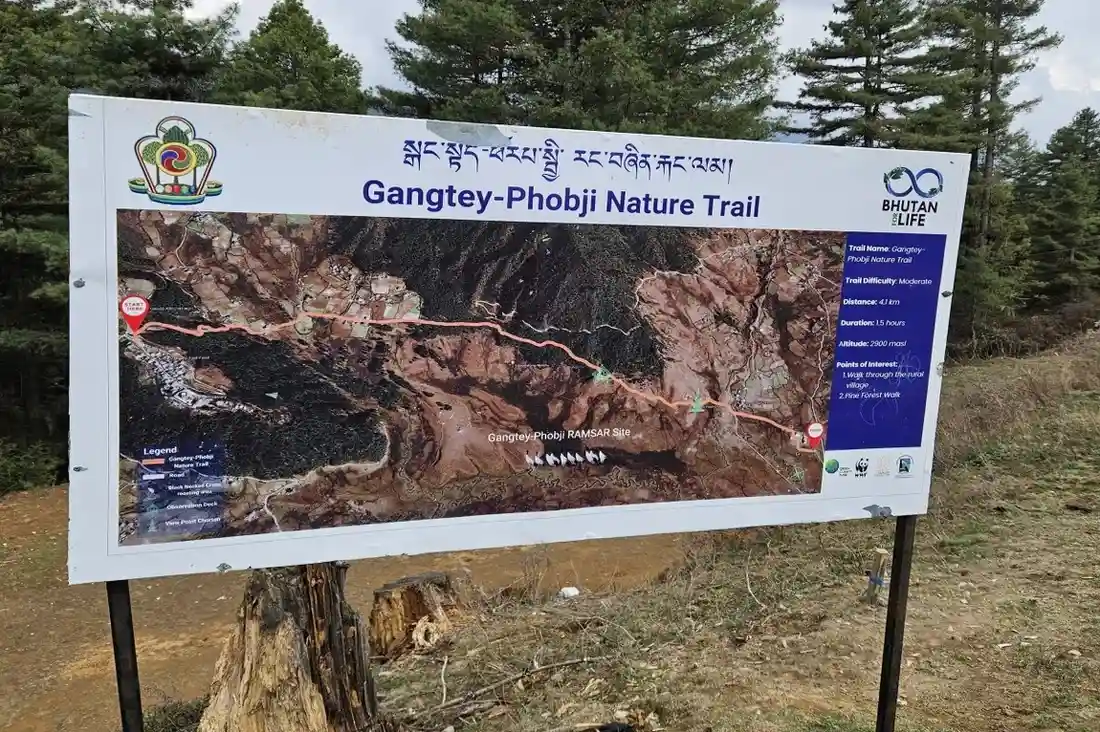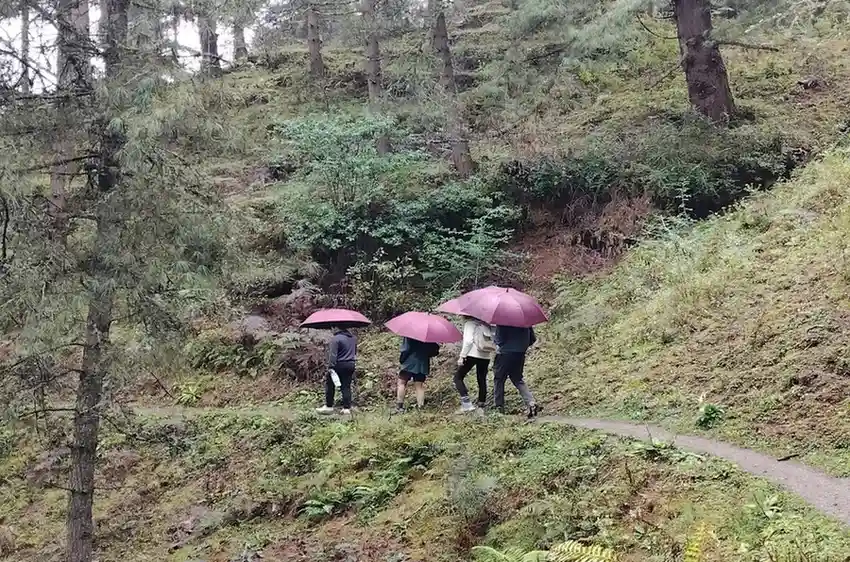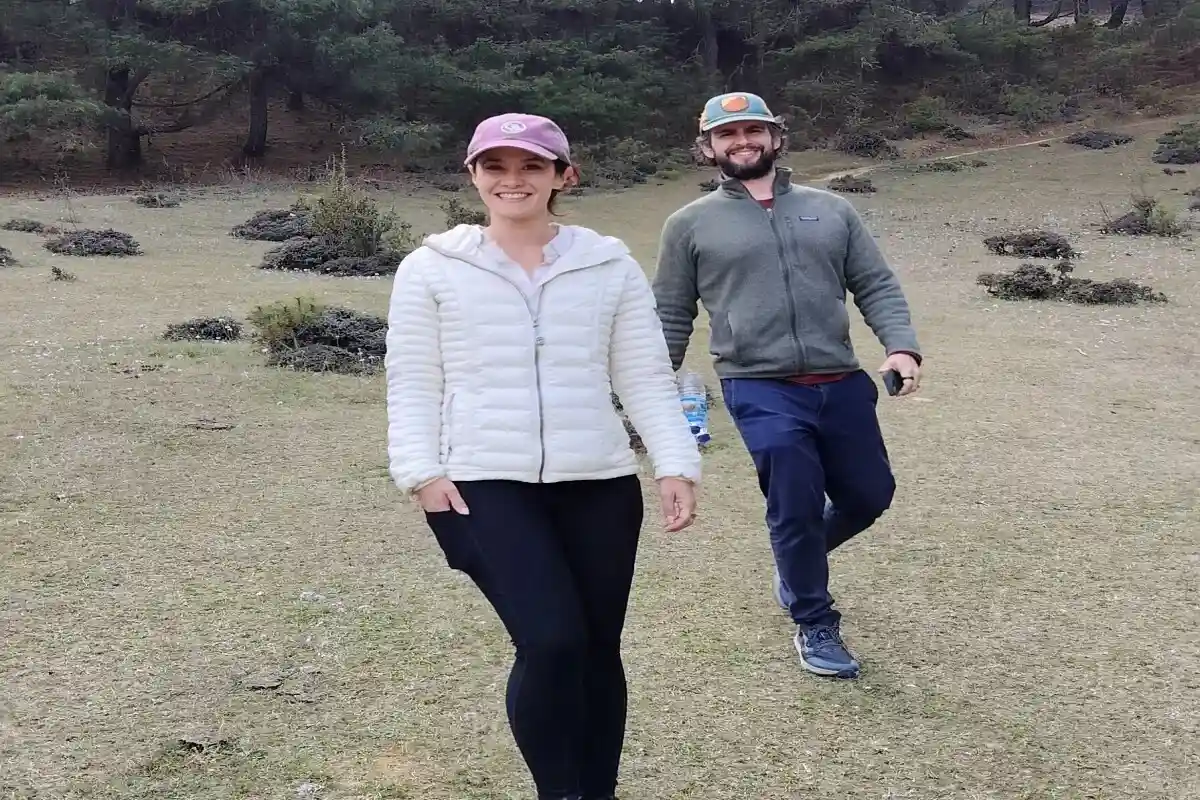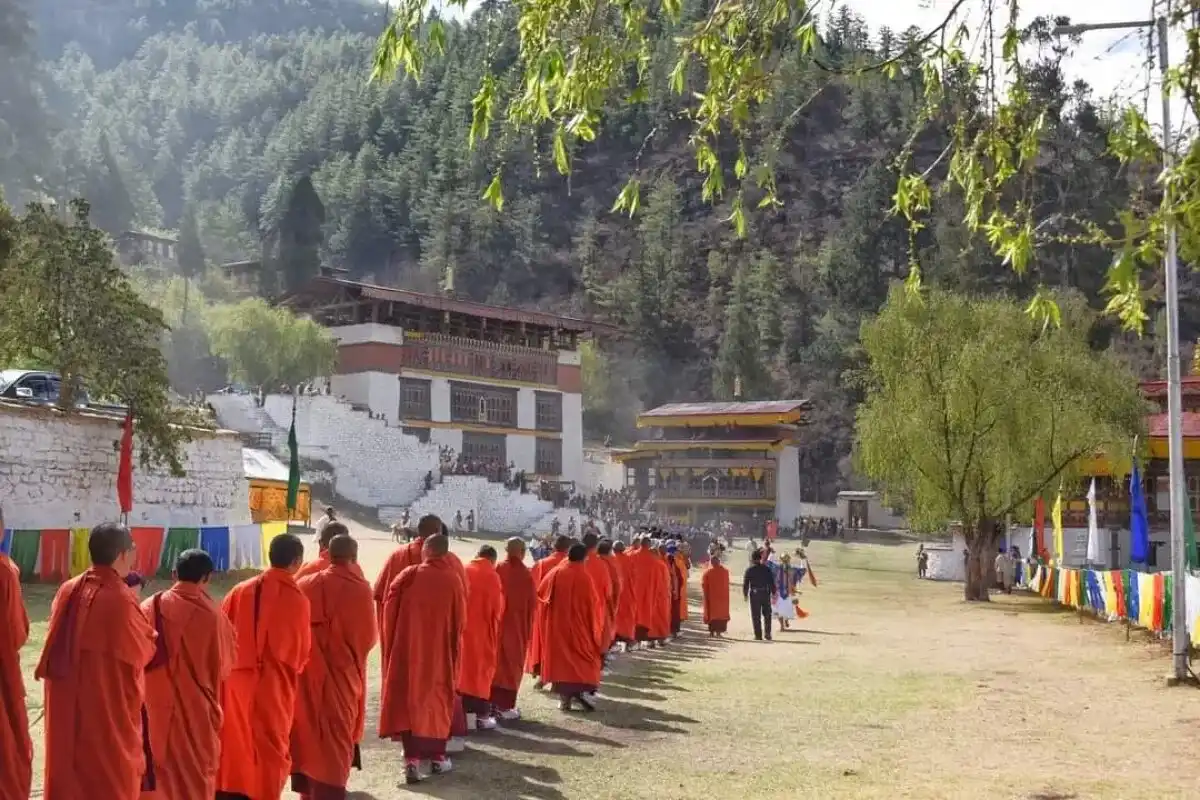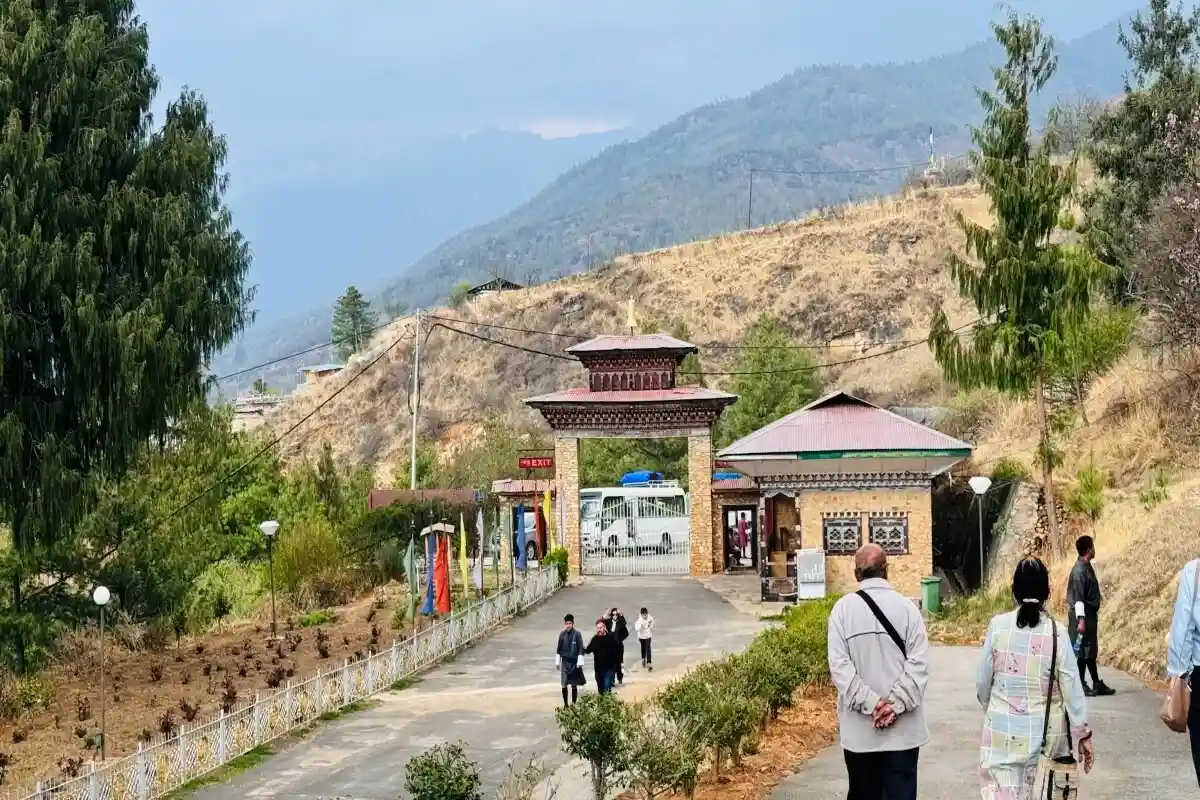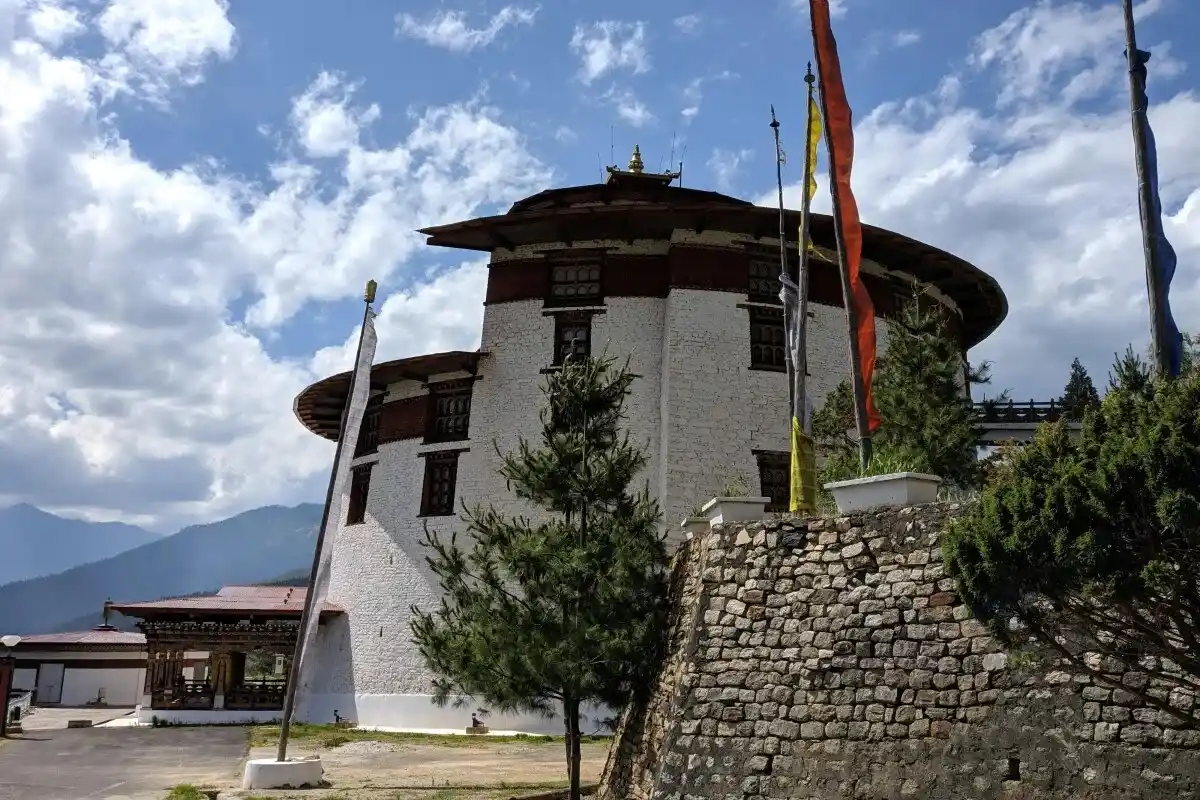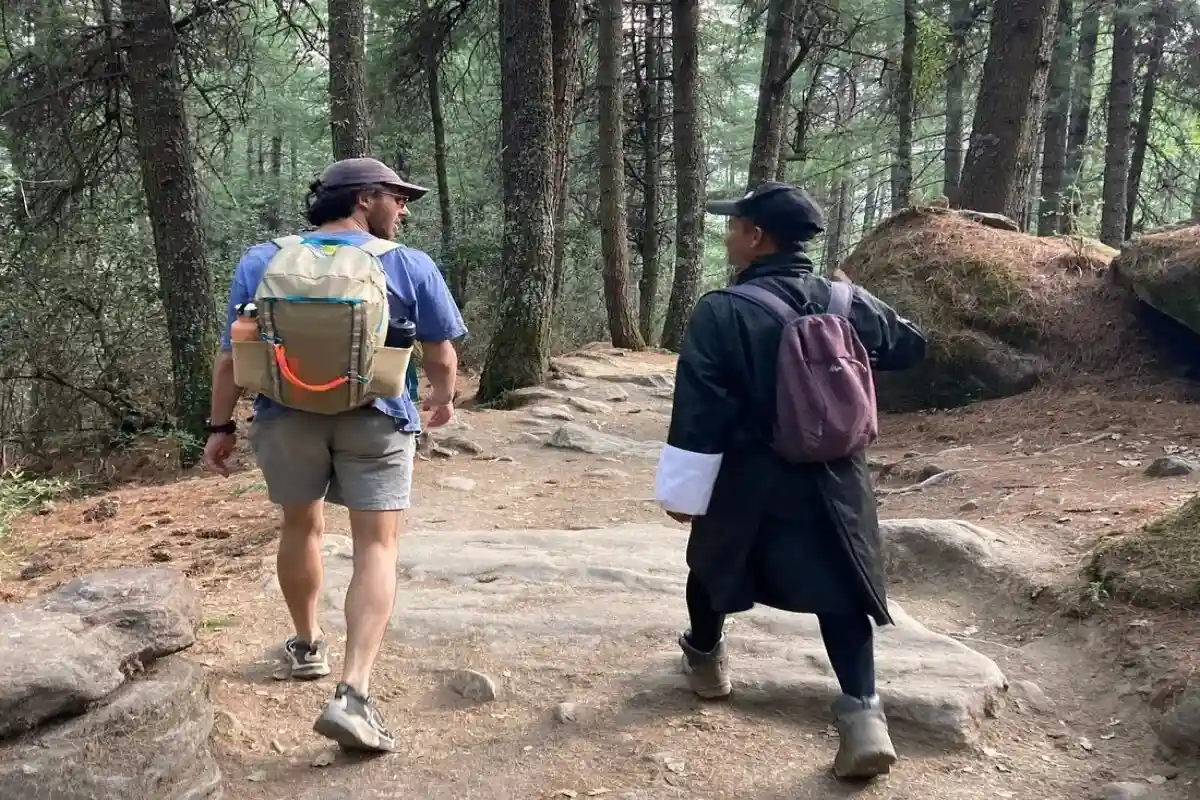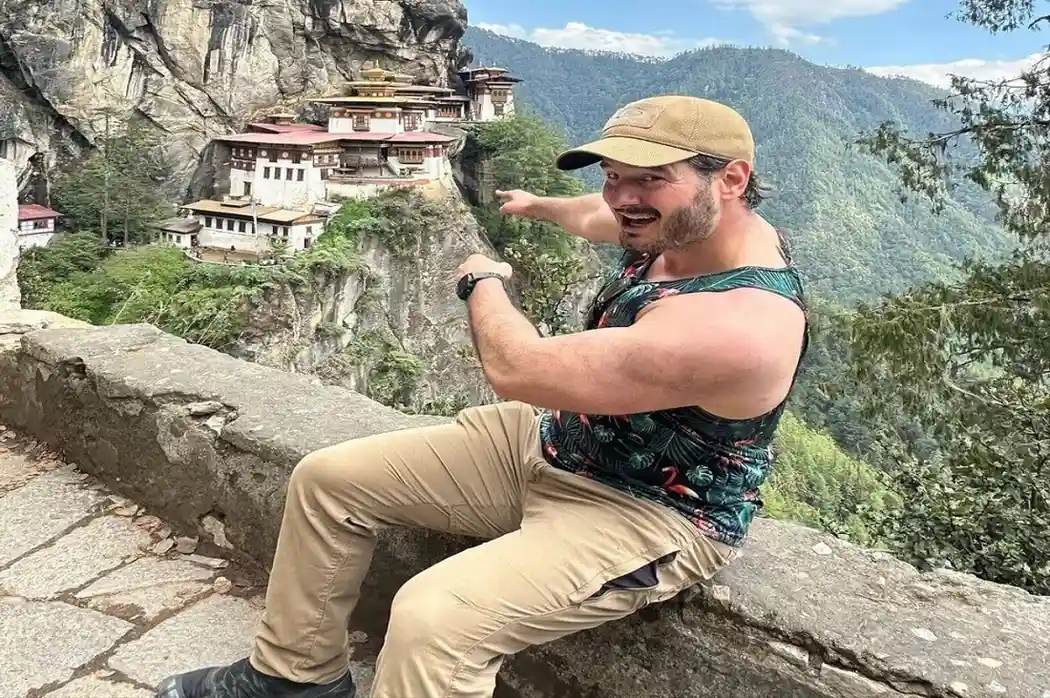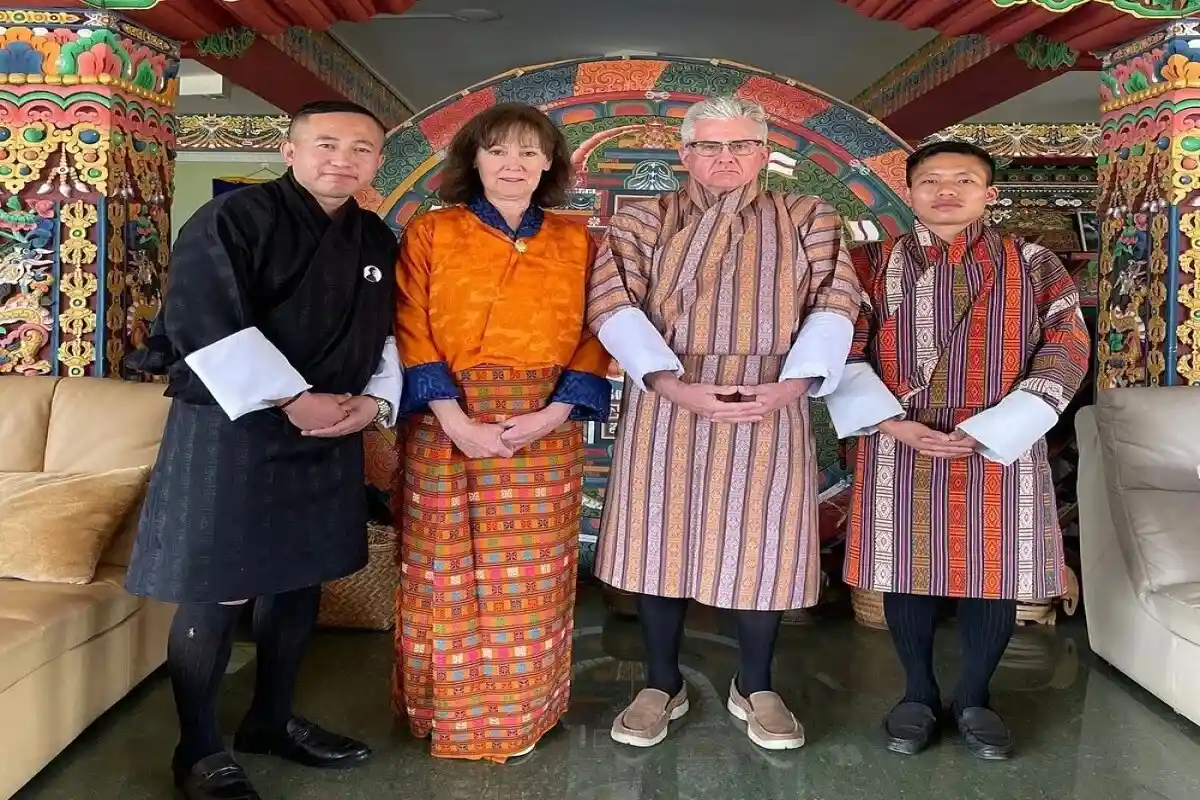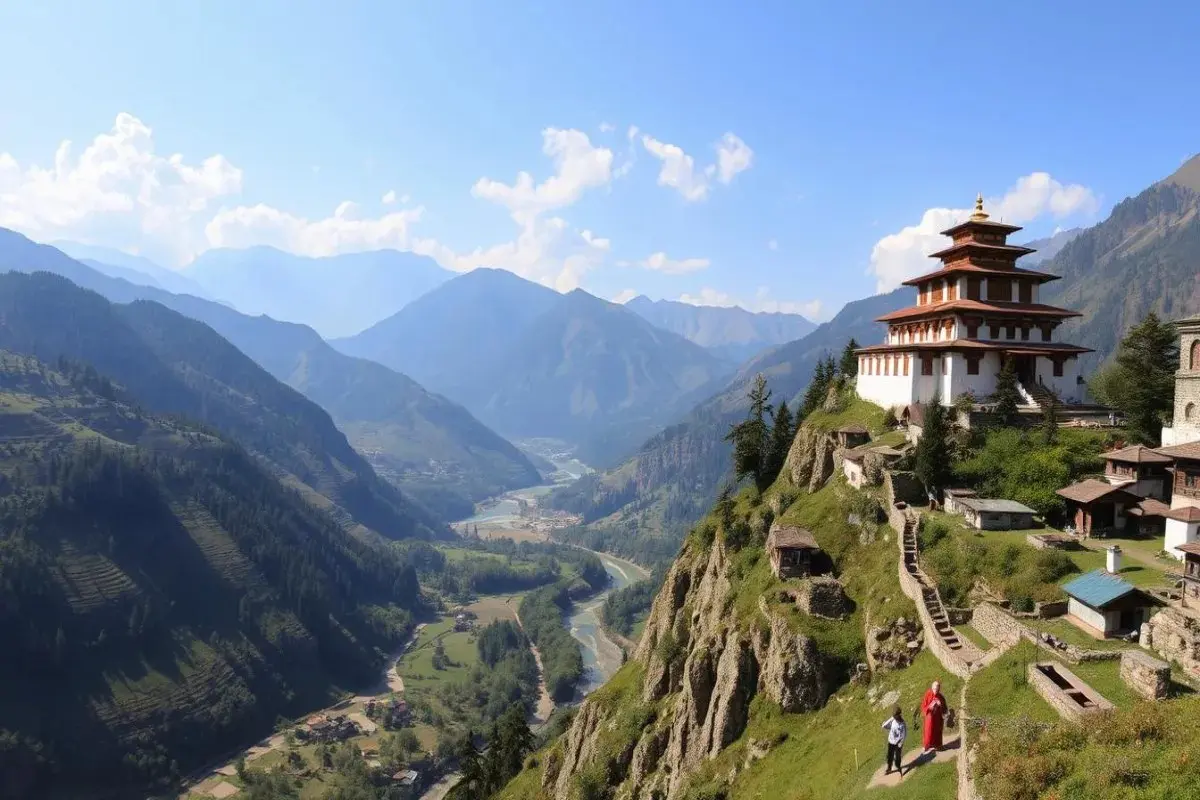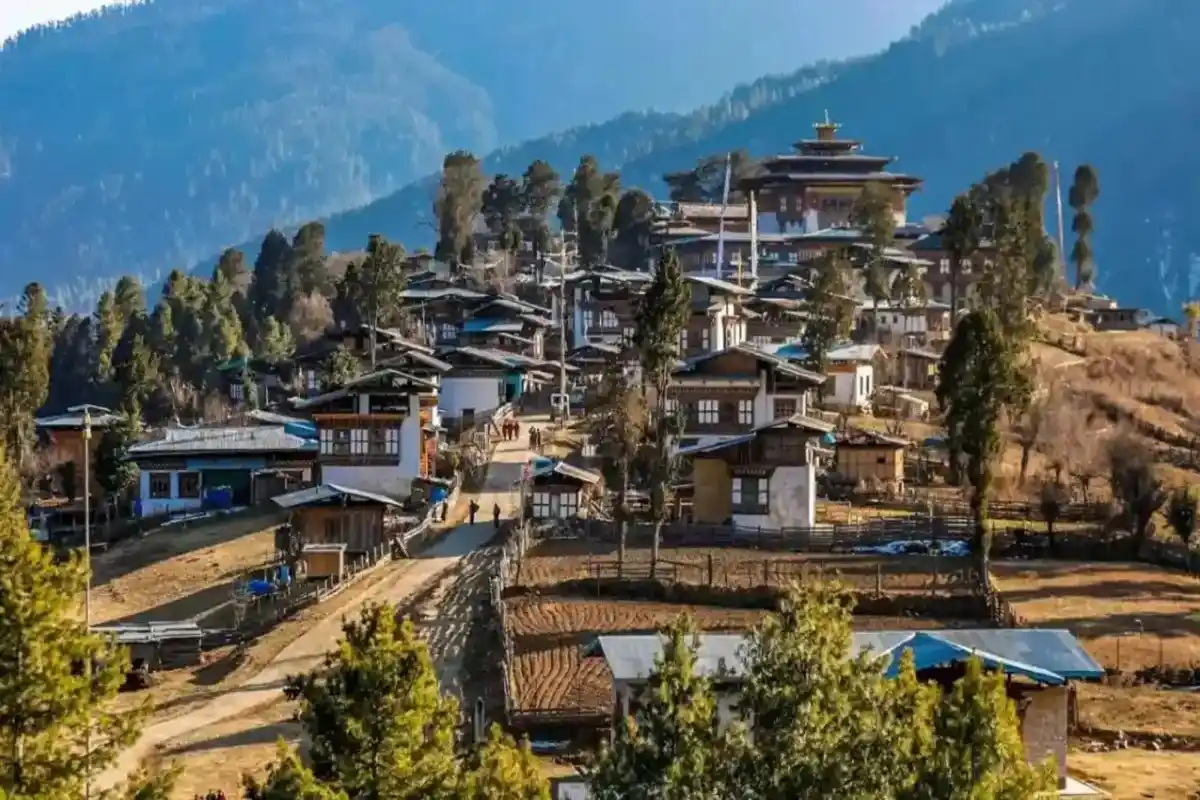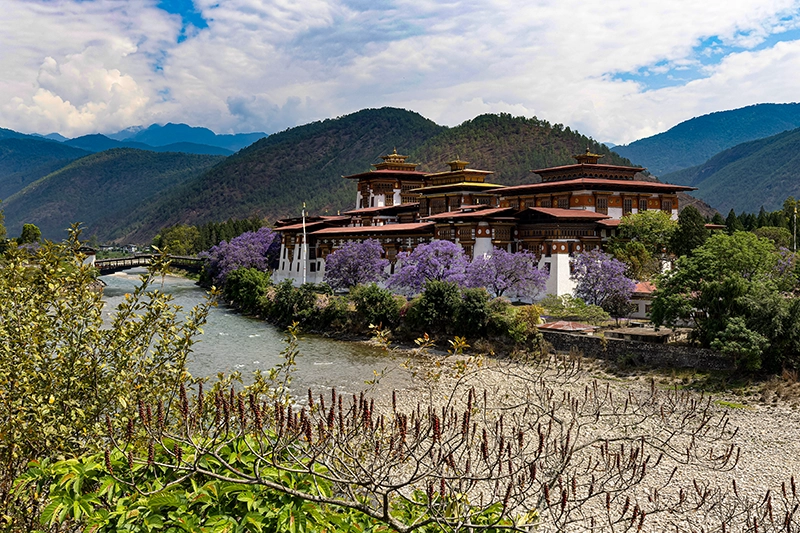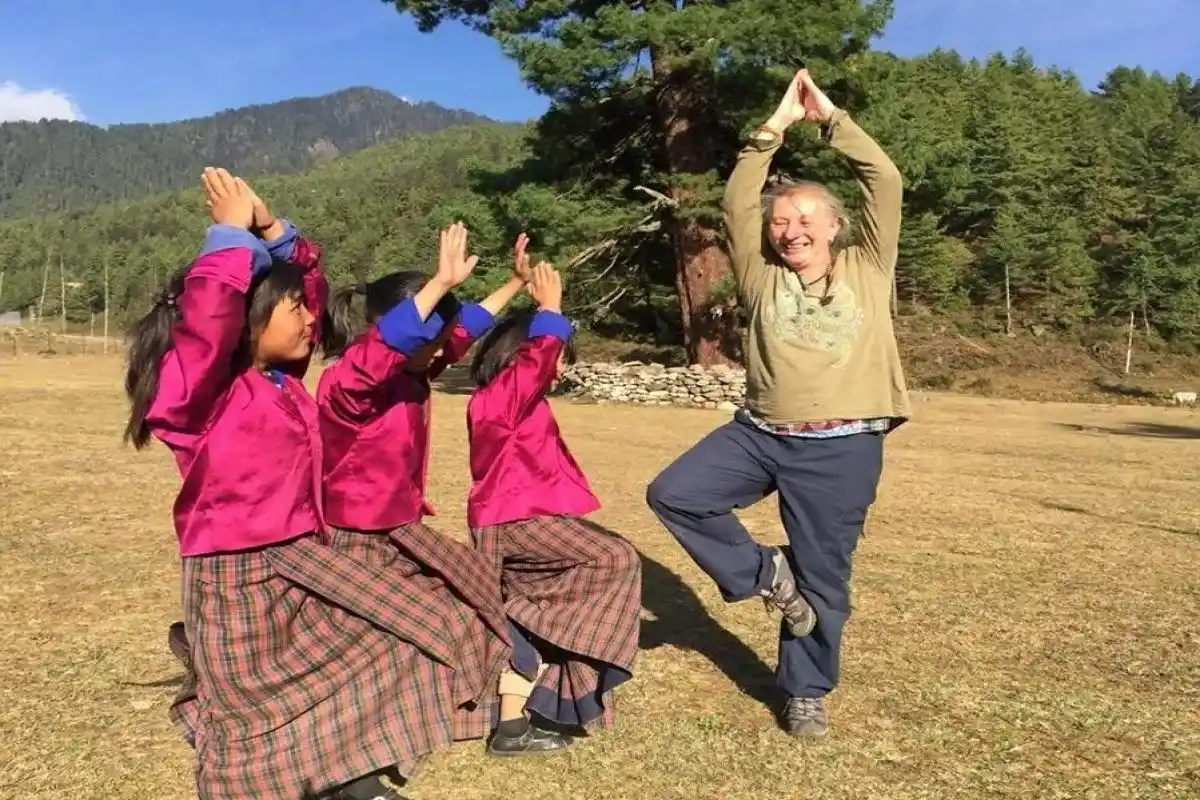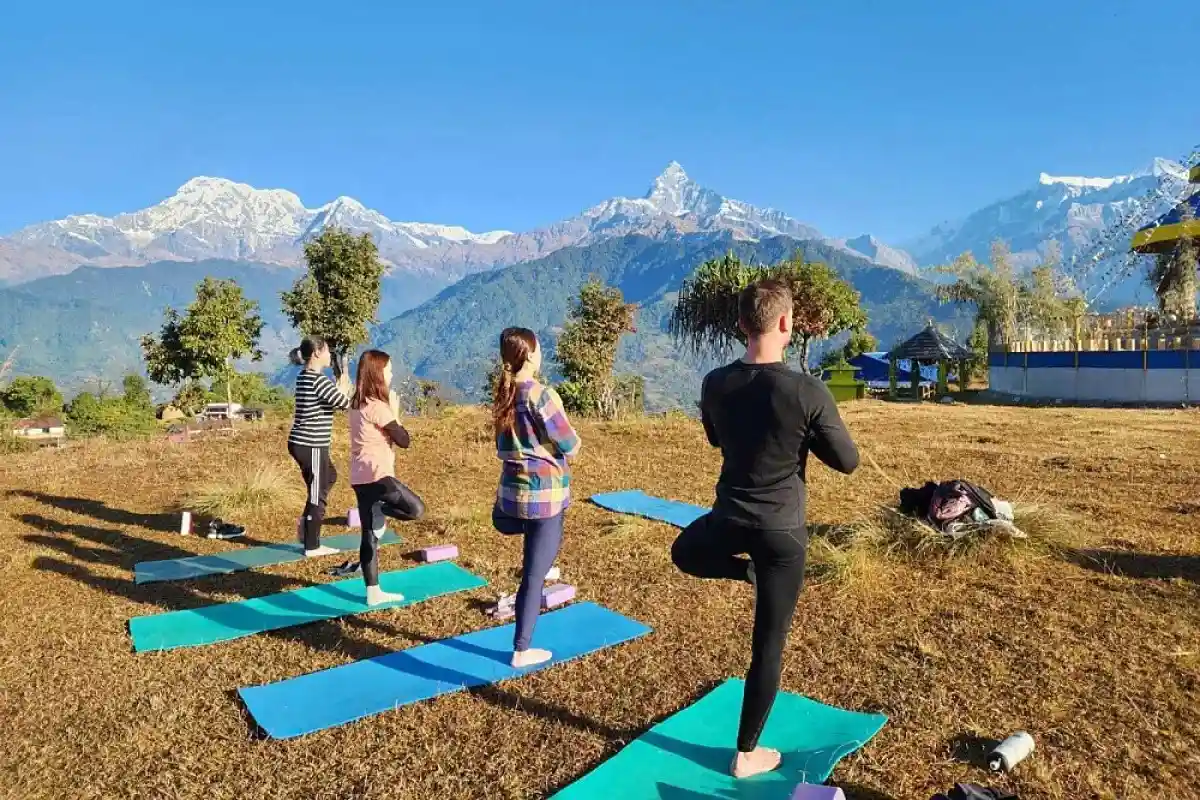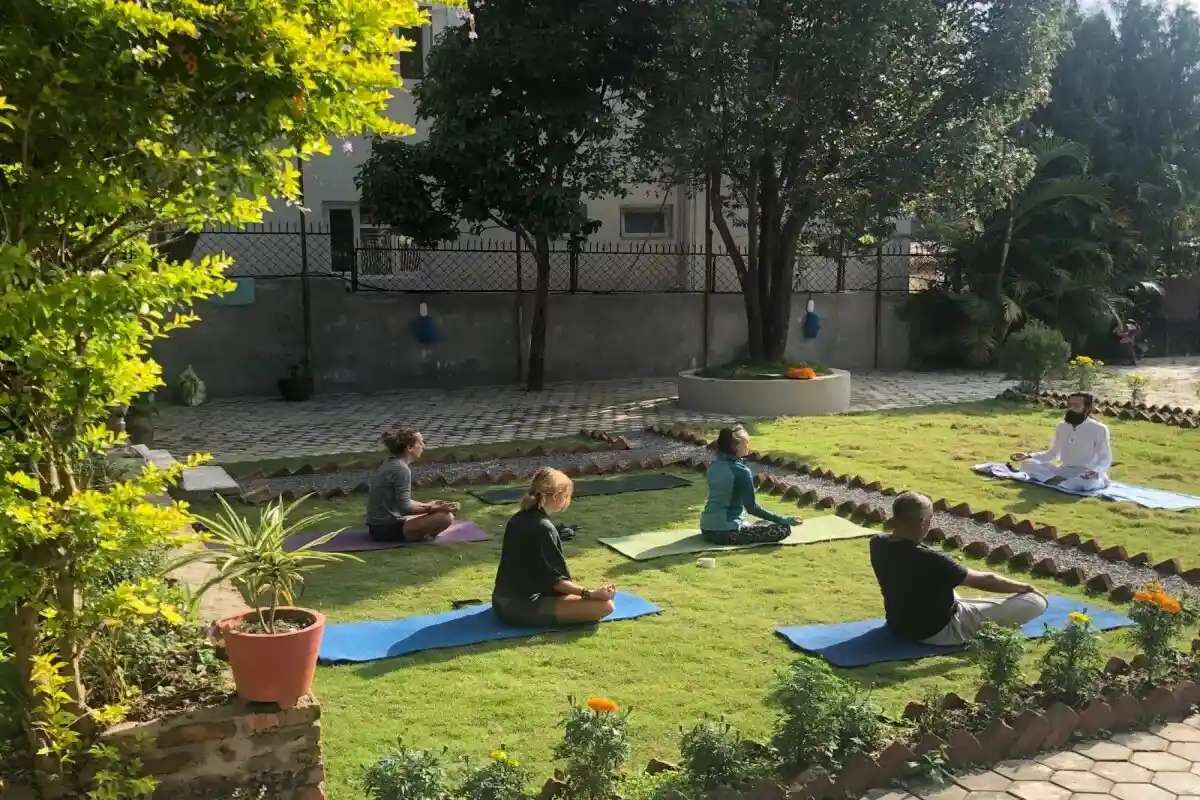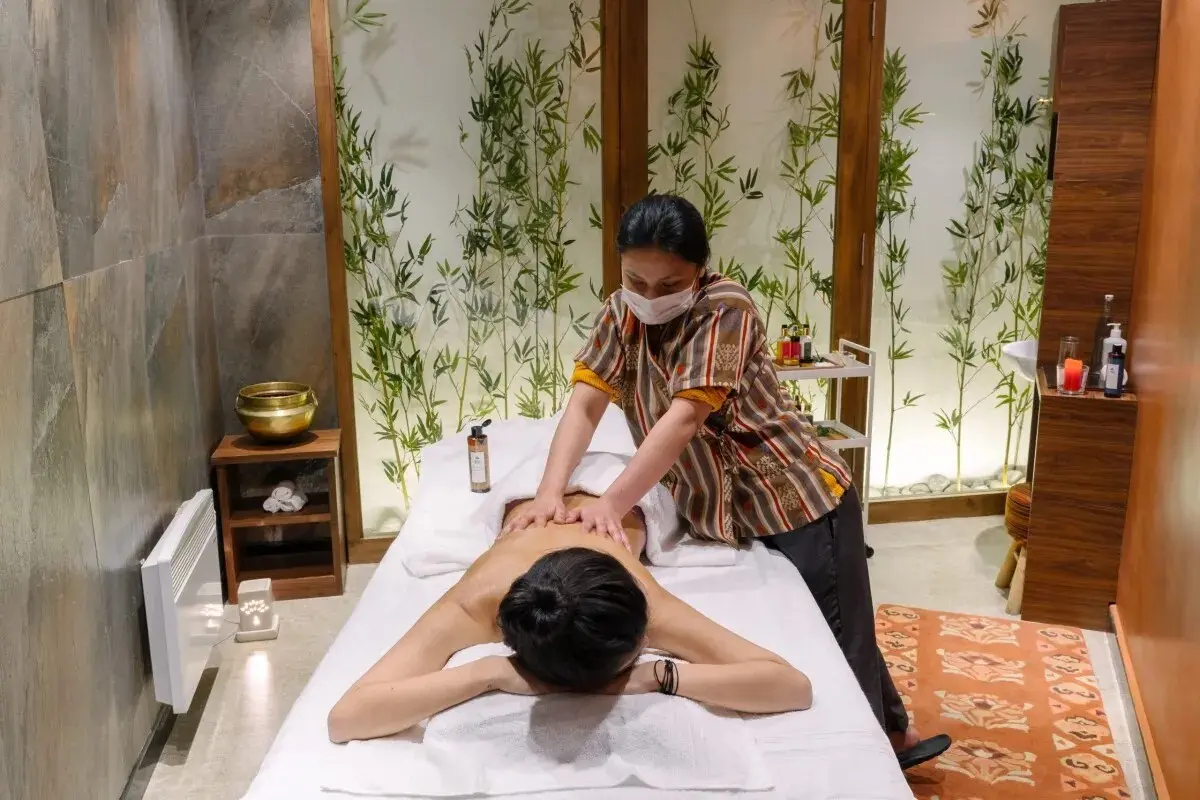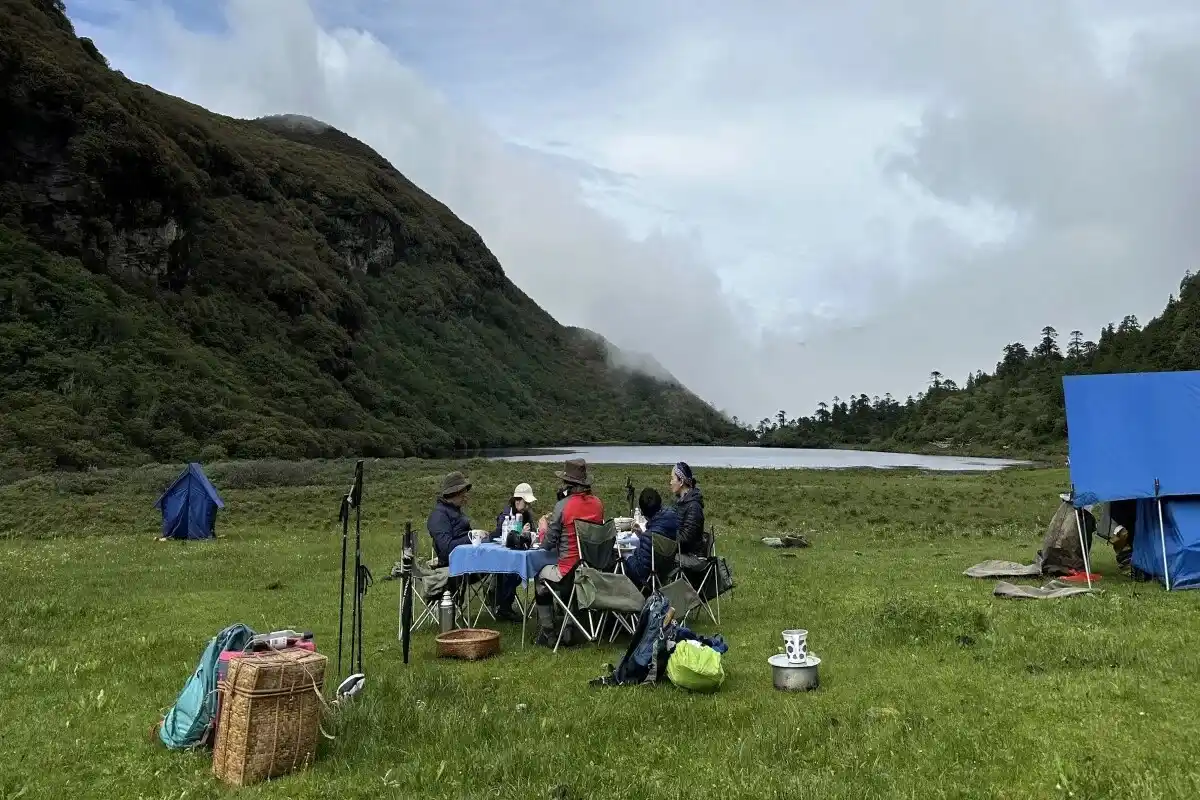Bhutan Active Wellness & Meditation Journey - 8 Days
Bhutan, the Land of the Thunder Dragon, is really more than a place to visit, just another tourist destination; it is a place where spirituality and nature work together. Bhutan Active Wellness & Meditation Journey is an opportunity to explore Bhutan, which includes focused meditation, yoga, participating in the local culture, and engaging in light treks across these spectacular valleys. This adventure is not only to travel through the lands of Bhutan but to care for and cleanse the spirit, the body, and the mind.
Highlights of the tour
- Paro Dzong Visit
- Tiger’s Nest Hike
- Thimphu City Exploration
- Punakha Dzong & Riverside Meditation
- Immersive Cultural Interaction with Locals
Trip Overview
The eight-day trip will be filled with wonderful valleys, ancient monasteries, and relaxing yoga and meditation. Every day has something new to offer; you will hike to the sacred places or participate in a mindfulness practice, or listen to the local customs. It is about inner peace and self-discovery with the exotic nature of Bhutan. This is not just a travel but a tour towards regaining your mind, body, and soul. As you go through the journey, you will take away the sensation of relaxation, a sense of clarity, and a feeling more connected with yourself.
Highlights
This 8 day long Bhutan Active Wellness & Meditation Journey allows you to explore different cultural places and experience different meditation practices along with the professional yoga practitioners.
Paro Dzong Visit
One of the most outstanding fortresses in Bhutan is Rinpung Dzong (Paro Dzong). It is situated above Paro valley and has both a history behind it and possesses beauty. You will be inspired by its traditional architectural structure, paintings, and the quiet courtyards as examples of Bhutanese architecture. The dzong is further still a religious and administrative headquarters, where you will get to experience the local culture in its full context.
Tiger’s Nest Hike
Even a climb to the Tiger Nest monastery, interaction with the locals, is something exciting about this country. The sacred site is literally located on the cliff top, the location of which is surrounded by wood and mountain landscape. The trek is thrilling and yet humbling since it takes an individual to a spiritually significant area. This experience at the monastery leaves one with a sense of achievement, and one is left with a feeling of the spirituality of Bhutan.
Thimphu City Exploration
Thimphu, the modern capital of Bhutan, is a pastiche of modern customary life. The cultural attractions of the destination are the Buddha Dordenma statue, the National Textile Museum, Memorial Chorten, which you will visit. A walk in the markets and streets is an occasion to feel local craft, food, and life. Thimphu is an interesting blend of piety, culture, and Bhutanese hospitality.
Punakha Dzong & Riverside Meditation
At the meeting point of two rivers is the town referred to as the Punakha Dzong, or the palace of great happiness. It is amongst the most beautiful castles of Bhutan with a magnificent architecture of peaceful arts. Having visited the dzong, one can attend one of the meditative sessions on the bank of a river. The experience will enable visitors to rest, contemplate, and be in the peaceful aura of Punakha Valley.
Immersive Cultural Interaction with Locals
It is a very fulfilling part of this experience to mingle with the Bhutanese. You may stop by local villages and participate in cooking,or attend a local festival. These interactions will show how Bhutanese people live, what is in their heads, and their traditions. Spending time with people of the host country will help them have a deeper connection, and it will also help them always remember the rich hospitality shown by Bhutan.
Meditation Practices in Bhutan
The life of people of Bhutan is easy and spiritual, with a touch of nature. Activities each day are guided by teachings that focus on mindfulness, kindness and inner peace that have a Buddhist background. People of the village are quite compact communities that can support each other and abide by traditions that have a centuries-long history. They are quite receptive to their festivals, locally made crafts and religion is a way of life. Tourists visiting Bhutan will be able to experience the bliss in which residents of the country find harmony to balance work, family and spiritual activities as well as the environment. The experience of this way of living will give a glimpse of what the Bhutanese people think and believe in and allow you to explore the secluded and introspective culture that makes Bhutan so unique.
Conclusion
A wellness escape in Bhutan is not just a vacation; it is rather a time to heal, to look back upon, and to develop. Nested in a beautiful scenery with clean valleys, quiet monasteries, and a gentle pulse of nature, serenity exists at every minute in this place. The cultural activities, mindful walks, and guided meditations create some of the most amazing memories that last long past the time one goes home. The major thing that makes Bhutan quite special is the fact that it is not only the landscapes that have not been spoiled, but also the people, the traditions, and the spiritual values. Your travel is hassle-free when you choose a respected Bhutanese travel agent, who will leave you free to enjoy every aspect of your trip, without worrying about the details. Whether you want to find inner peace, cultural explorations, or a break from your routine, this trip has something that is definitely worth it. It is an opportunity to relax, reconnect, and experience the soft beauty of Bhutan most naturally, therefore, fostering well-being.
The eight-day trip will be filled with wonderful valleys, ancient monasteries, and relaxing yoga and meditation. Every day has something new to offer; you will hike to the sacred places or participate in a mindfulness practice, or listen to the local customs. It is about inner peace and self-discovery with the exotic nature of Bhutan. This is not just a travel but a tour towards regaining your mind, body, and soul. As you go through the journey, you will take away the sensation of relaxation, a sense of clarity, and a feeling more connected with yourself.
Highlights
This 8 day long Bhutan Active Wellness & Meditation Journey allows you to explore different cultural places and experience different meditation practices along with the professional yoga practitioners.
Paro Dzong Visit
One of the most outstanding fortresses in Bhutan is Rinpung Dzong (Paro Dzong). It is situated above Paro valley and has both a history behind it and possesses beauty. You will be inspired by its traditional architectural structure, paintings, and the quiet courtyards as examples of Bhutanese architecture. The dzong is further still a religious and administrative headquarters, where you will get to experience the local culture in its full context.
Tiger’s Nest Hike
Even a climb to the Tiger Nest monastery, interaction with the locals, is something exciting about this country. The sacred site is literally located on the cliff top, the location of which is surrounded by wood and mountain landscape. The trek is thrilling and yet humbling since it takes an individual to a spiritually significant area. This experience at the monastery leaves one with a sense of achievement, and one is left with a feeling of the spirituality of Bhutan.
Thimphu City Exploration
Thimphu, the modern capital of Bhutan, is a pastiche of modern customary life. The cultural attractions of the destination are the Buddha Dordenma statue, the National Textile Museum, Memorial Chorten, which you will visit. A walk in the markets and streets is an occasion to feel local craft, food, and life. Thimphu is an interesting blend of piety, culture, and Bhutanese hospitality.
Punakha Dzong & Riverside Meditation
At the meeting point of two rivers is the town referred to as the Punakha Dzong, or the palace of great happiness. It is amongst the most beautiful castles of Bhutan with a magnificent architecture of peaceful arts. Having visited the dzong, one can attend one of the meditative sessions on the bank of a river. The experience will enable visitors to rest, contemplate, and be in the peaceful aura of Punakha Valley.
Immersive Cultural Interaction with Locals
It is a very fulfilling part of this experience to mingle with the Bhutanese. You may stop by local villages and participate in cooking,or attend a local festival. These interactions will show how Bhutanese people live, what is in their heads, and their traditions. Spending time with people of the host country will help them have a deeper connection, and it will also help them always remember the rich hospitality shown by Bhutan.
Meditation Practices in Bhutan
The life of people of Bhutan is easy and spiritual, with a touch of nature. Activities each day are guided by teachings that focus on mindfulness, kindness and inner peace that have a Buddhist background. People of the village are quite compact communities that can support each other and abide by traditions that have a centuries-long history. They are quite receptive to their festivals, locally made crafts and religion is a way of life. Tourists visiting Bhutan will be able to experience the bliss in which residents of the country find harmony to balance work, family and spiritual activities as well as the environment. The experience of this way of living will give a glimpse of what the Bhutanese people think and believe in and allow you to explore the secluded and introspective culture that makes Bhutan so unique.
Conclusion
A wellness escape in Bhutan is not just a vacation; it is rather a time to heal, to look back upon, and to develop. Nested in a beautiful scenery with clean valleys, quiet monasteries, and a gentle pulse of nature, serenity exists at every minute in this place. The cultural activities, mindful walks, and guided meditations create some of the most amazing memories that last long past the time one goes home. The major thing that makes Bhutan quite special is the fact that it is not only the landscapes that have not been spoiled, but also the people, the traditions, and the spiritual values. Your travel is hassle-free when you choose a respected Bhutanese travel agent, who will leave you free to enjoy every aspect of your trip, without worrying about the details. Whether you want to find inner peace, cultural explorations, or a break from your routine, this trip has something that is definitely worth it. It is an opportunity to relax, reconnect, and experience the soft beauty of Bhutan most naturally, therefore, fostering well-being.
Short Itinerary
Arrive in Paro, scenic drive to Thimphu, evening yoga & meditation
Explore Thimphu city – Memorial Chorten, Buddha Dordenma, Textile Museum and guided mindfulness meditation
Drive to Punakha via Dochula Pass, short Lungchutse hike and river meditation
Visit Punakha Dzong, experience Bhutanese hot-stone bath and guided chanting meditation
Travel to Phobjikha Valley, visit Gangtey Monastery and meditate with monks
Nature hike on Gangtey Trail, forest bathing and evening star-lit yoga session
Return to Paro, visit Rinpung Dzong and National Museum, evening reflection meditation
Hike to Tiger’s Nest Monastery, farewell lunch and departure
Bhutan Active Wellness & Meditation Journey Itinerary
A perfect location to take place at the Paro International Airport, the panorama of the Himalayas and the serene Bhutanese environment welcome you. There is a scenic drive through lush valleys and charming villages up to the capital of the country, Thimphu, via Paro. The trek provides initial sneak peeks into Bhutanese culture, architecture, and natural beauty as well. The day is then brought to its end with a light evening yoga and meditation. This allows you to feel relaxed, overcome travel fatigue and get both mind and body ready to face the wellness and cultural experiences that are yet to follow in the course of traveling.
Cultural and spiritual sightseeing in Thimphu is done on the second day. The tour begins with a visit to the Memorial Chorten, a center of Tibetan Buddhism, and then the Buddha Dordenma, a giant statue overlooking the valley. Then there is the National Textile Museum, which will provide information on the textile trade and ways in which such objects were made. In the afternoon, there will be a guided mindfulness meditation session during which the participants will be guided by local practitioners. It is a session that allows you to bring inner peace to yourself, and it is set within the Thimphu relaxing atmosphere. The cultural exploration combined with wellness practice enables you to immerse yourself in the experiences of Bhutan culture while caring about the mind and body, preparing you to continue your travel days.
Day 3 takes you on a scenic tour along the road to Punakha over the Dochula pass, and it is dotted with 108 stupas with views of snow-capped mountains. An excellent photo point and a beautiful admiration of Bhutan in terms of spirituality and you can enjoy natural beauty throughout the pass. On the way, one can also go along a short trekking path to Lungchutse Monastery, which can give a view of the valleys and Mountains. Once in Punakha, a meditation session by the river is an option that you may enjoy after hearing the running river and meditating. This is a hiking and sightseeing experience inspired by meditation, whereby the visitors are allowed to reach the depths of nature and the spirituality of Bhutan
On the 4th day, you will begin by chanting meditation in a serene Punakha Dzong, which is a beautiful fortress that makes one feel relieved and relaxed. Get ready for a Bhutanese hot-streets bath, customs referred to as Dotsho, in the afternoon. In this, glowing river stones are added to a wooden tub of fresh water with a mixture of scattered local herbs. As minerals are released and stones radiate warmth, there are also healing and detoxifying qualities of the water that can relax sore muscles and calm the mind. Conclude by chanting with the instructions of a guided meditation, listening to the beats of chants, and focusing on breathing in a steady way to allow yourself to feel deeply relaxed and be in the moment.
On the 5th day, you will head off to Phobjikha Valley, leaving Punakha behind, and enjoy the wide landscape and natural beauty of the valley. The road itself is beautiful and scenic, with great scenery all along. After reaching, make your trip to the famous Gangtey Monastery, which is a 17th-century spiritual center that overlooks the valley. This is the opportunity to meditate with monks, asking to immerse in the atmosphere of calmness. In the afternoon, have a contemplative stroll along lush meadows and pine forest, and in winter, you may get a glimpse of black-necked cranes. Culture, spirituality, and nature come together in this day of one stunning event.
On Day 6, get on a smooth Gangtey Nature Trail and stroll through pine and bamboo forests that roll along the beautiful U-shaped Phobjikha Valley. Take a break to do a forest walk, a silent, peaceful walk in the woods, feeling each breath of fresh pine air fill the mind. As the skies are turning blue, relax in a night yoga session under the stars that will blend easy steps with the calm breeze of the night. This day melts into serene nature, filling you with inner peace that grounds you in the present.
On the 7th day, you will travel back to Paro and start your day with a visit to Rinpung Dzong, an outstanding monastery-fortress, which can also be seen to incorporate religion and governance. Come around through its prayer chambers and shrines among thick, heavy walls. Then go up to the National Museum, which is kept in the old round-tower watchtower above the dzong. More than 3,000 items are on display at this treasure trove, including ancient thangkas, royal artifacts, wildlife conserved, and ritual masks that give a fantastic insight into the cultural and natural history of Bhutan. Before the evening sets in, practice a quiet reflection meditation in so that the peace could enter your mind and spirit.
On this day you will hike high on Paro Taktsang- the famous Tiger's Lair Monastery high up on a sheer cliff about 900m above the Paro Valley, and at an altitude of some 3,120m. This trail loops through pine forests, prayer flags and culminates in some spectacular views of this sacred site. Whether at the viewpoint or in the monastery itself, you pause to do a guided Meditation - as the surroundings soothe you, you may come into a deeper state of suggested letting the surroundings relax you. On returning to Paro, you bid the land farewell with a highly significant farewell lunch, where you carry with you the peace and beauty of this journey.
Know Before You Travel
-
Best season for the trip:
The best time to enjoy a Bhutan wellness trek is during spring (March to May) and autumn (September to November). In spring, valleys are decorated with flower blossoms, and the weather is much friendlier, so hikes are more enjoyable. Fall is a season of clear skies, cool mountain air, and picturesque views of snowy mountains. These seasons have numerous local festivals, where travellers can get a glimpse of the Bhutanese rich culture. The spring and the autumn offer the ideal mixture of pleasant weather, the splendor of nature, and a valuable cultural touch.
FAQs for Bhutan Active Wellness & Meditation Journey
You don’t need any prior meditation or yoga experience. The practices are welcoming to everyone. Guided sessions are beneficial to first-timers as they make them feel comfortable and very well supported.
Through it, you will experience various forms of meditation, including mindfulness meditation to enhance awareness, breathing meditation, which is used to relax the mind, and guided meditation by monks into areas of compassion and spiritual development. The practices ensure harmony, decrease tension and increase your connection with the beautiful nature of Bhutan.
Packing clothes in layers to handle changing weather, such as moisture-managing base layers, warm midlayers like fleece or down, and a waterproof jacket. Bring a second pair of strong hiking shoes to be comfortable.
Internet connections are also widely available in numerous hotels and restaurants located in large towns like Paro and Thimphu, and can be characterized by Wi-Fi connections. Internet connection is not available in most parts of the treks in remote areas. It is always preferable that the family be aware in advance and have a local SIM card so that communication is possible in case of an emergency.
Hiking in Bhutan is offered in various options, from easy walks to difficult treks. The Gangtey Nature Trail is a 2 to 3-hour easy hike through scenic valleys. The ascent of the Tiger Nest will be moderately strenuous since it involves climbing 900 m.
You need a visa and all necessary permits for your trip. These documents can not be received on the day of your arrival, so they must be processed before coming here. After you book a trip with us, we will manage these papers for you. Your Bhutan visa is arranged by Orrog as part of the package.
The main way to come to Bhutan is through Paro International Airport, which is well-connected to cities like Bangkok, Delhi, Kathmandu, and Singapore. Most people arrive by air, but if you plan to come via road, you can enter through Phuentsholing, located on the southern border with India, which is the most commonly used entry point.
It is recommended to apply for the visa at least 20 days before your planned departure date so that there is enough time for processing your Bhutan visa, finalizing your itinerary, and arranging your guides and transportation. Although visa processing itself is relatively fast once payment is received, early preparation helps avoid delays and ensures availability, especially during peak seasons (spring and autumn).
You don’t require a passport-size photo for the visa, but it is wise to carry at least 2–4 recent passport-sized photographs during your trip. These may be needed for local permits, registration, or when applying for a local SIM card upon arrival in Bhutan.
Yes, you can lengthen your stay in Bhutan either before or after your trip. Bhutan’s tourism model requires visitors to pay a Sustainable Development Fee (SDF) and a daily package cost, so any extra days will involve additional charges. Extensions are a great opportunity to explore cultural sites in Paro, Thimphu, or even add another short trip or day hike.
Yes, Bhutan requires full tour payment in advance before your visa can be processed and issued. The government of Bhutan regulates this policy to ensure that all travel arrangements are confirmed through a licensed Bhutanese tour operator. We are a licensed tour operator that ensures you have everything you need for a trouble-free trip.
Any personal expenses are not covered in the package like:
- Tips for your guide and other staff
- Bottled drinks and snacks(personal expense)
- Souvenirs or local crafts
Credit cards are easily accepted in major cities like Paro and Thimphu. But in remote areas, you may not have access to a card or an ATM. So, it is best to carry some cash before heading for the trip.
Tipping is not mandatory, but it is a widely appreciated gesture and a customary way to show gratitude for good service. The tipping guideline would be to give USD 5-10 per day as a tip for the guides and other staff.
Paro International Airport is the only international airport in Bhutan. It is well connected by flights from cities like Bangkok, Delhi, Kathmandu, and Singapore.
Yes, airport pick-up and drop-off are included in the package. We will have your guide and driver meet you at the airport and transport you to your hotel.
While Bhutan's roads are mostly paved, some parts are narrow, winding, and occasionally affected by weather. However, we ensure your travel is safe, well-maintained, and driven by an experienced professional throughout the journey.
The Bhutanese Ngultrum is used in Bhutan. All local transactions during the trip will be in BTN.
US Dollars (USD) are generally accepted at larger hotels, souvenir shops, and tour operators, particularly in Paro and Thimphu. However, it’s advisable to convert your currency to BTN for general purchases in rural areas. Other currencies like the Euro or the Pound are not commonly accepted directly.
No, credit or debit cards are not accepted on the trip, as it takes you through remote regions with no banking or electronic payment access. All trip-related payments like accommodation, meals, permits, etc, are paid in advance.
You can exchange foreign currency at the Paro International Airport, at banks, or through licensed money changers in cities like Thimphu and Paro. It's best to exchange enough cash before heading out on the trip.
The national language is Dzongkha, but many Bhutanese also speak English. If you speak English and are worried about communicating with the local people, you will have your guide as a translator.
Yes, all licensed tour guides in Bhutan are required to speak fluent English. Many are also trained in other languages such as German, Japanese, or French. Communication during the trip will be smooth and clear in English.
Most signboards, tourist maps, and information brochures are written in English, especially in tourist destinations like Paro, Thimphu, and trailheads. Directional signs along routes are often labeled in both Dzongkha and English.
No, learning Dzongkha is not at all needed for the trip, but knowing a few basic words like "Kuzu zangpo la" (Hello) or "Kadrinche la" (Thank you) is a good way to interact with the locals.
Language barriers are minimal, as your guide will handle all communication with locals and support staff. Your guide will translate for you during your interaction with the locals.
To greet people, you can greet with locals “Kuzu zangpo la” (Hello) by performing a slight bow. Most common greetings include physical greetings, such as shaking hands less visible, especially in rural areas.
Yes, but remember to seek permission, especially when taking photos of monks, locals, or temples. Please note that clicking photos is not allowed at most religious sites.
Visitors should dress modestly and respectfully. This means:
- Covering shoulders and knees
- Removing hats and sunglasses
- Not wearing shorts or sleeveless tops
This applies to both men and women.
Yes, Bhutanese society is deeply rooted in Buddhism and tradition. Here are some key taboos:
- Do not point your feet at people or sacred objects
- Never touch anyone on the head, as it is considered sacred
- Walk clockwise around temples, stupas, and religious monuments
- Avoid public displays of affection
While gifts are not expected, they may be accepted graciously if given with respect. It is advisable to consult with the guide before giving out anything.
Bhutan typically uses Type C, Type D, and Type G electrical outlets. Standard safe voltage is 230V and frequency is 50Hz; therefore, ensure that your equipment is compatible with this voltage.
Indeed, it is highly advised to take along a universal travel adapter, particularly one to fit a variety of types of plugs, because plugs can be different in a hotel or a guesthouse.
Bhutan follows Bhutan Time (BTT), which is UTC/GMT +6 hours. This time zone remains consistent throughout the year.
No, Bhutan does not observe daylight saving time. The country maintains the same time year-round.
Bhutan is 30 minutes ahead of India. For example, 12:00 PM in India is 12:30 PM in Bhutan.
Yes, souvenirs can be bought in Paro or Thimphu before or after the trip.
Some popular souvenirs include hand-woven textiles (kira and gho fabric), prayer flags, thangka (religious scroll) paintings, handmade paper products, traditional masks, and Buddhist artifacts.
You can do some gentle bargaining in local street markets. However, in government-run shops and fixed-price stores, prices are usually non-negotiable.
Yes, you can easily purchase a SIM card upon arrival in Bhutan. We will assist you with the process, and you'll need a passport copy and a passport-sized photo.
No, internet access is not available during the trip. However, Wi-Fi is available in hotels in Paro and Thimphu before and after the trip.
Along our trip, we will go through different places. So, we will stay in accommodation that is available, ranging from boutique wellness resorts and eco-lodges to comfortable 3-star hotels and trekking campsites.
Yes, Bhutan has a growing number of wellness-focused retreats and luxury lodges that offer spa, yoga, and meditation programs. So, you will be staying in wellness resorts to lift your overall experience.
Yes, most accommodations provide hot water and heating. During treks, basic facilities are available, but comfort varies depending on altitude and remoteness.
You need to be moderately fit for activities like hiking, cycling. We can tailor itineraries based on your fitness level.
Absolutely, our programs suit all experience levels, from beginners to advanced practitioners.
We provide nutritious, mostly organic meals, often prepared with locally grown ingredients. If you have any special diet plan, please inform us beforehand so that it can be accommodated.
Yes, vegetarian, vegan, and detox-friendly menus are available on request, especially at wellness-focused properties.
We offer trekking, day hikes, cycling, nature walks, rafting, bird watching, and cultural village stays, often integrated with wellness themes in Bhutan.
Yes, you’ll hike daily, typically 4–5 hours a day. However, routes can be customized with rest days.
You should bring layered clothing, hiking boots, sun protection, personal toiletries, a reusable water bottle, and any personal health or wellness items.
We provide yoga mats, but you can bring your own for comfort or hygiene. For treks, essential gear like sleeping bags and tents is provided.
The package includes accommodations, all meals, professional guides, entrance fees, wellness sessions, equipment (for treks/yoga), and all transport.
It’s best to book 2 to 4 months in advance, especially during peak festival seasons.
The Internet is available in most hotels and wellness centres, but connectivity is limited or unavailable during treks or in remote areas.
Reviews & Ratings
-
Guarantee -
Thimphu,Bhutan -
975+17160228
Ready to Explore Bhutan?
Start your journey today and discover the magic of Bhutan with our expert guides and carefully crafted tours.
Book This Trip
-
No booking or credit card fees -
Best price guarantee -
Full customize trip
Ask a Question
Feel free to ask us anything about this tour. A travel expert will then get back to you as soon as possible
Ready to Explore Bhutan?
Start your journey today and discover the magic of Bhutan with our expert guides and carefully crafted tours.
